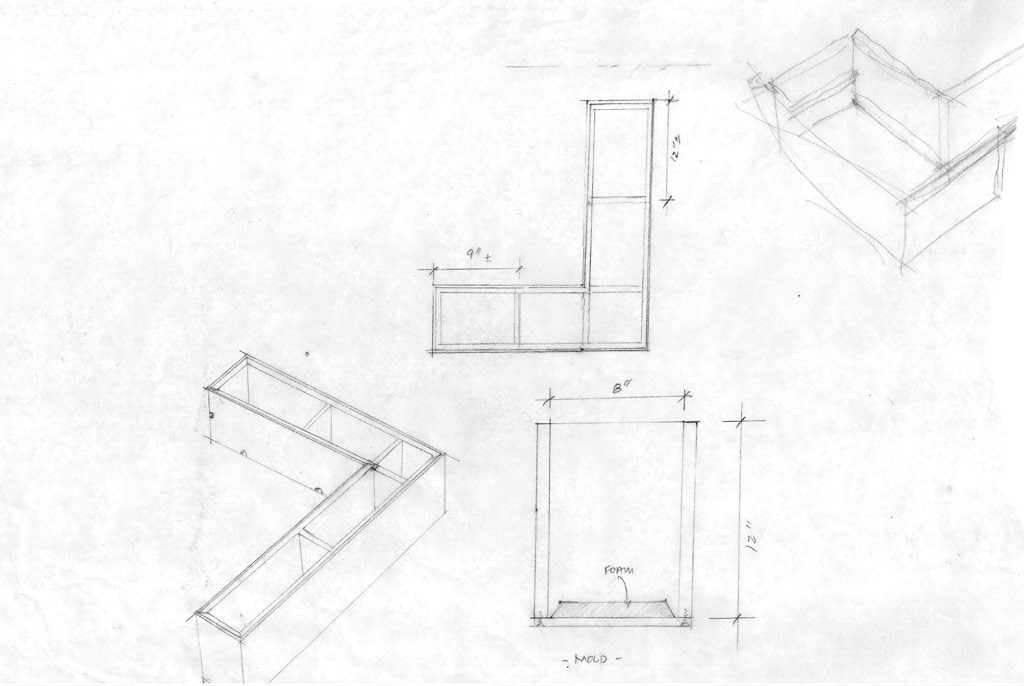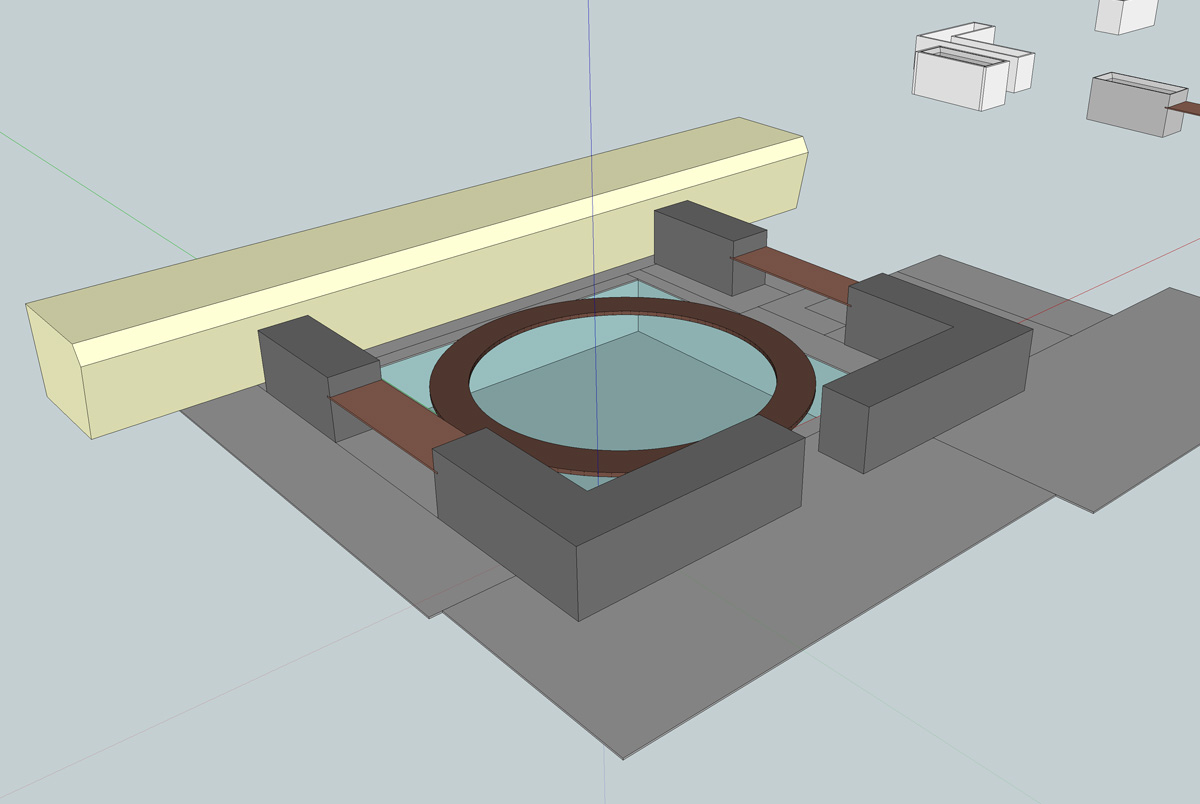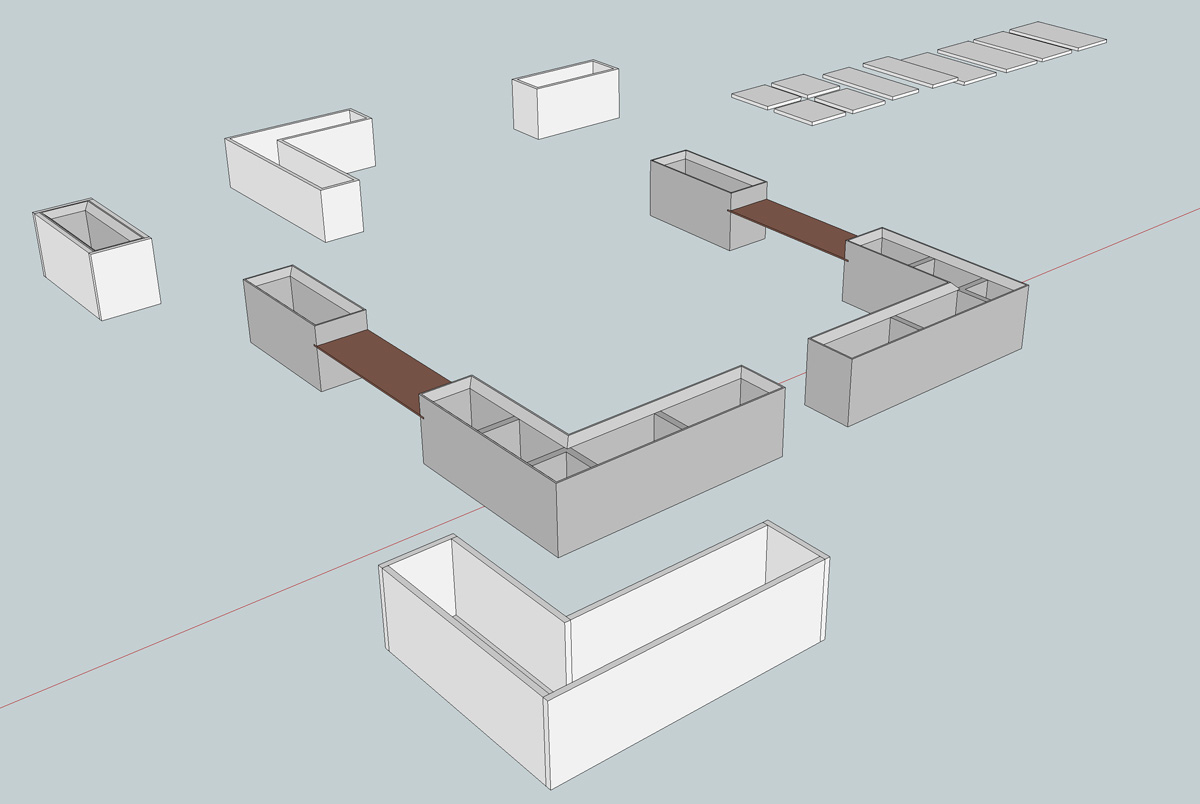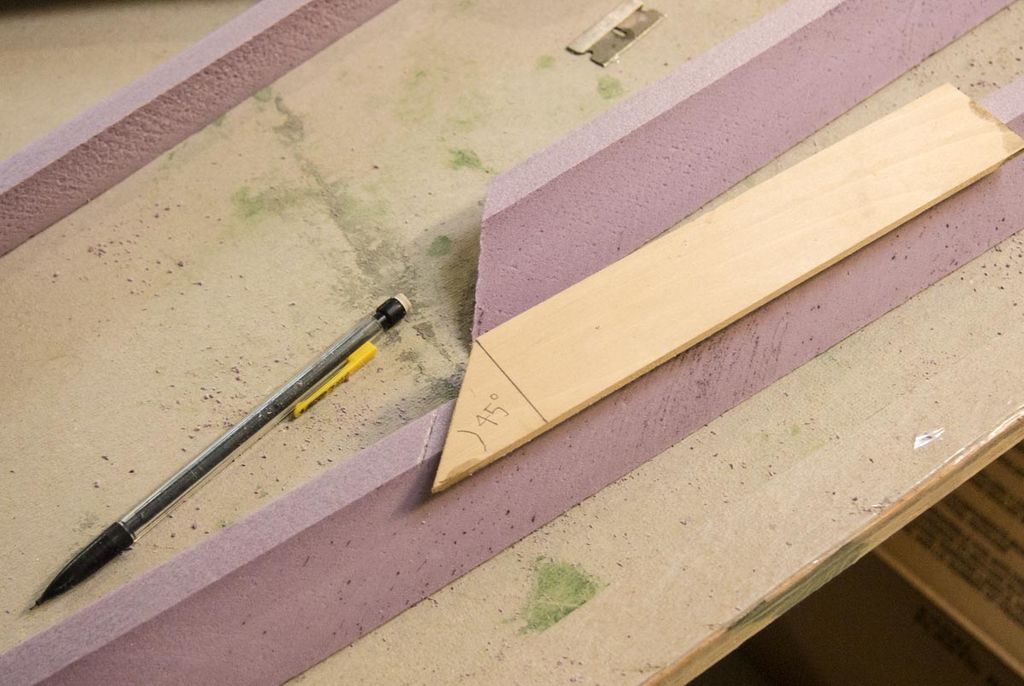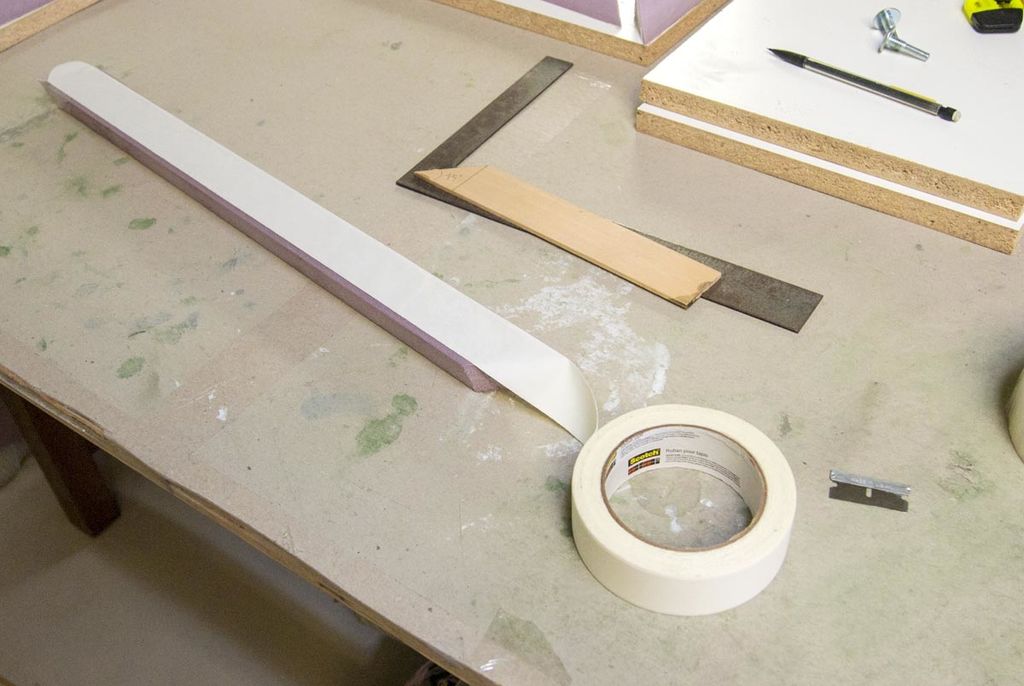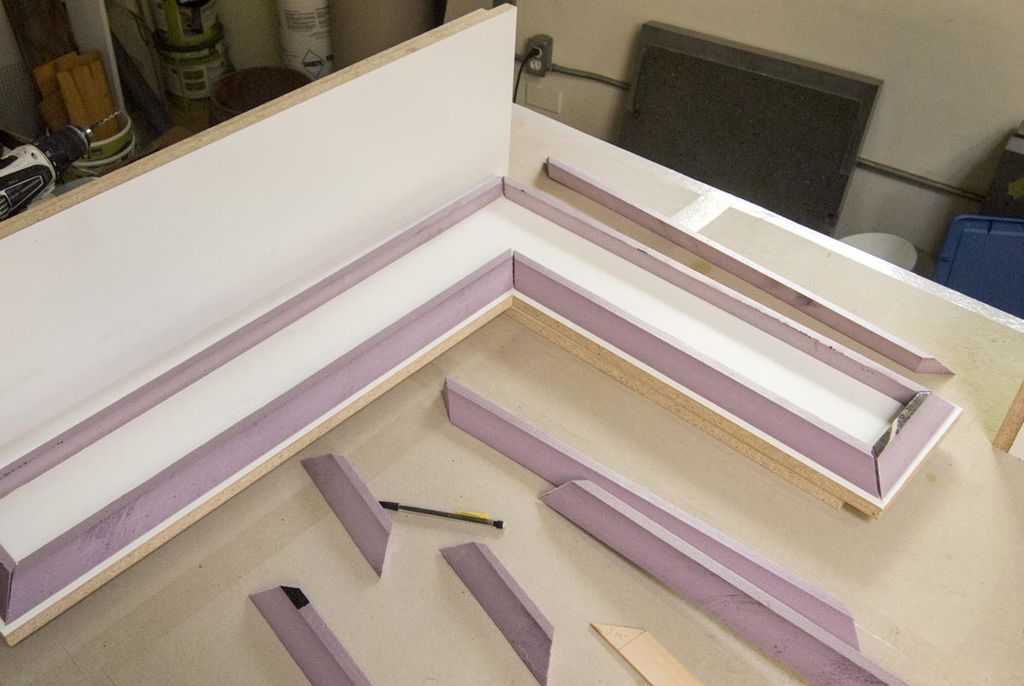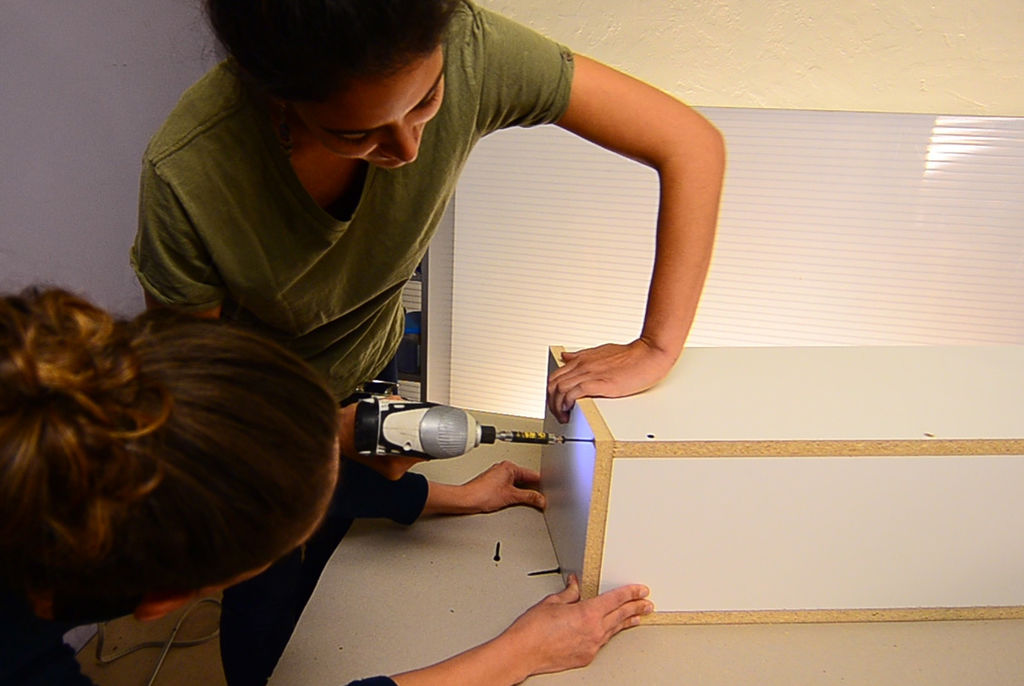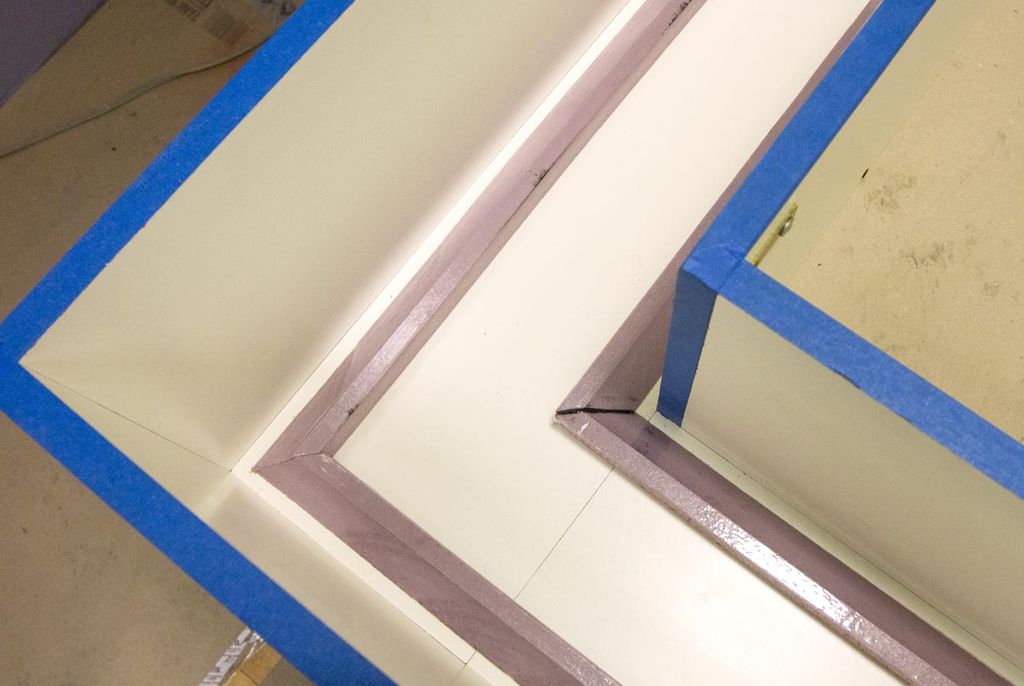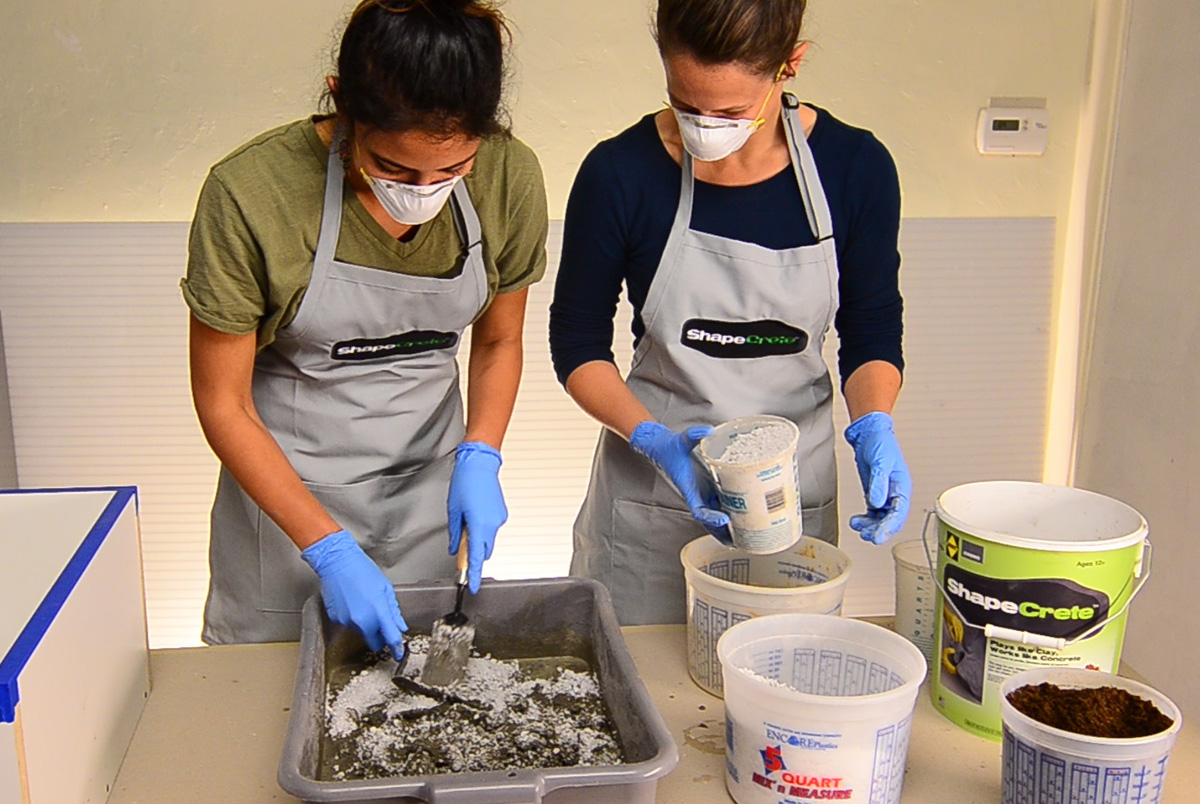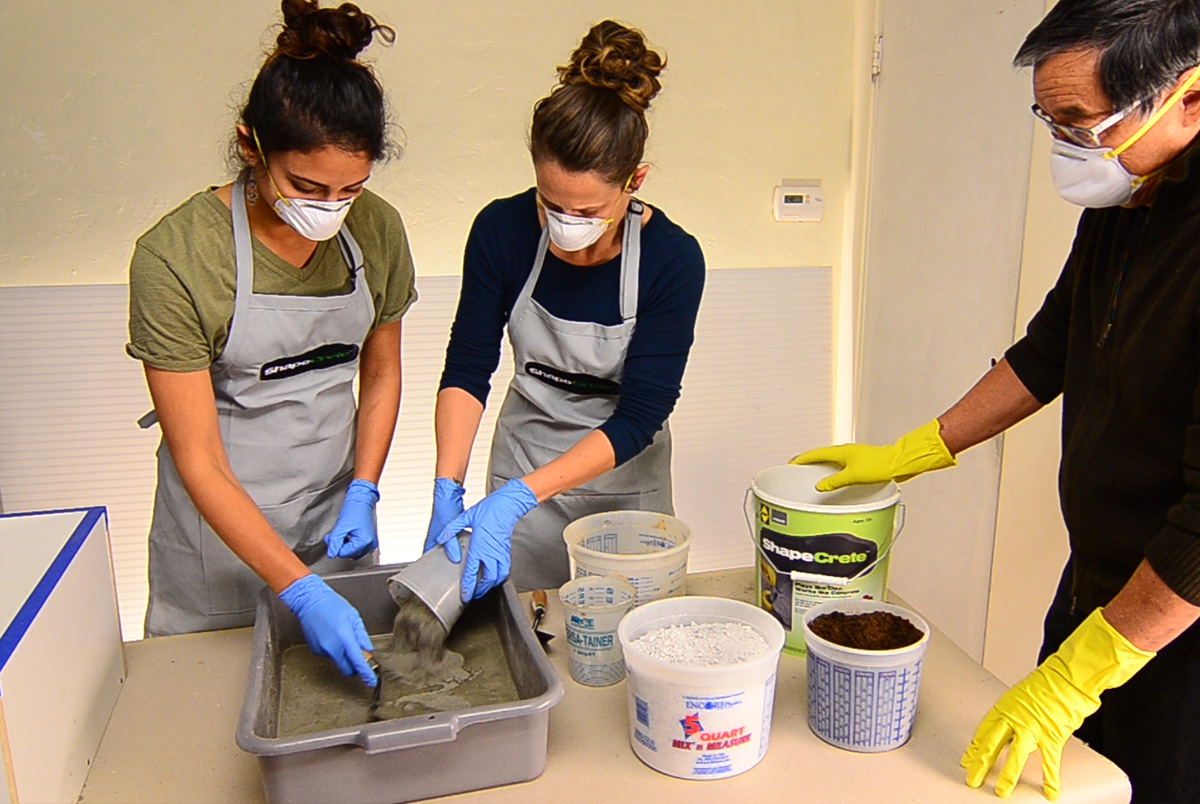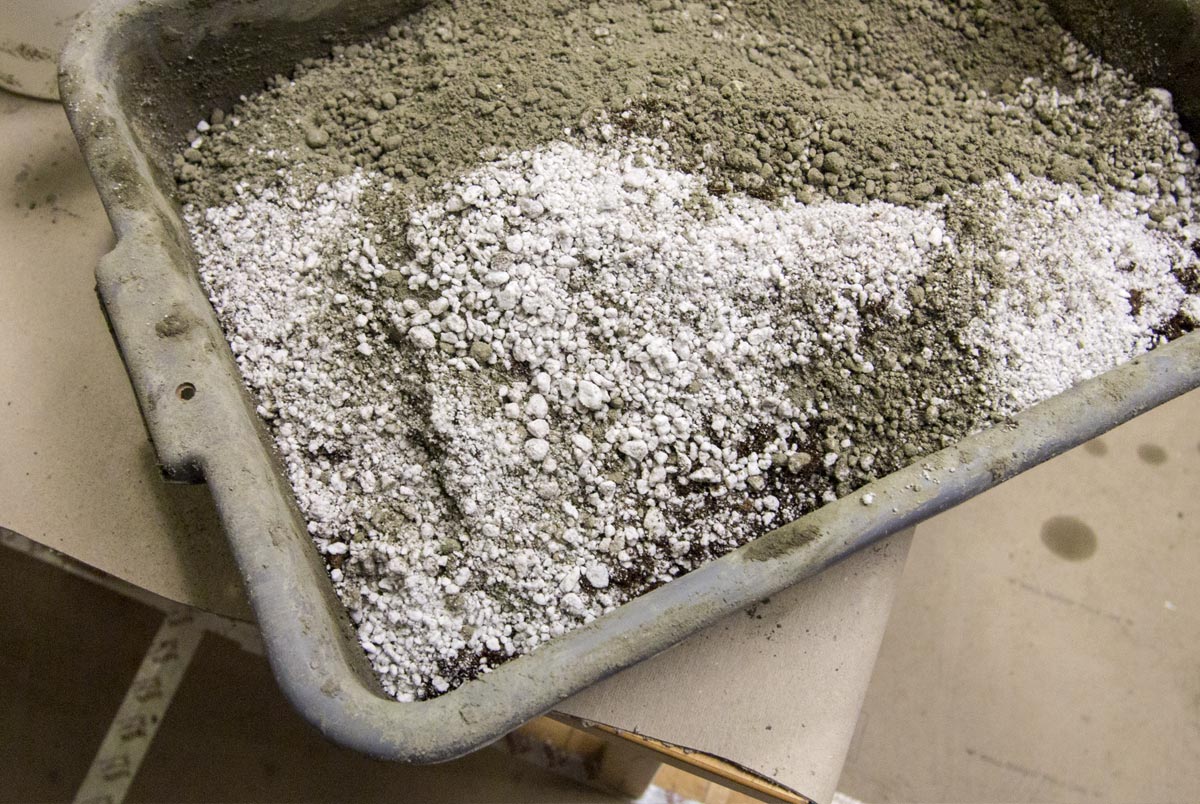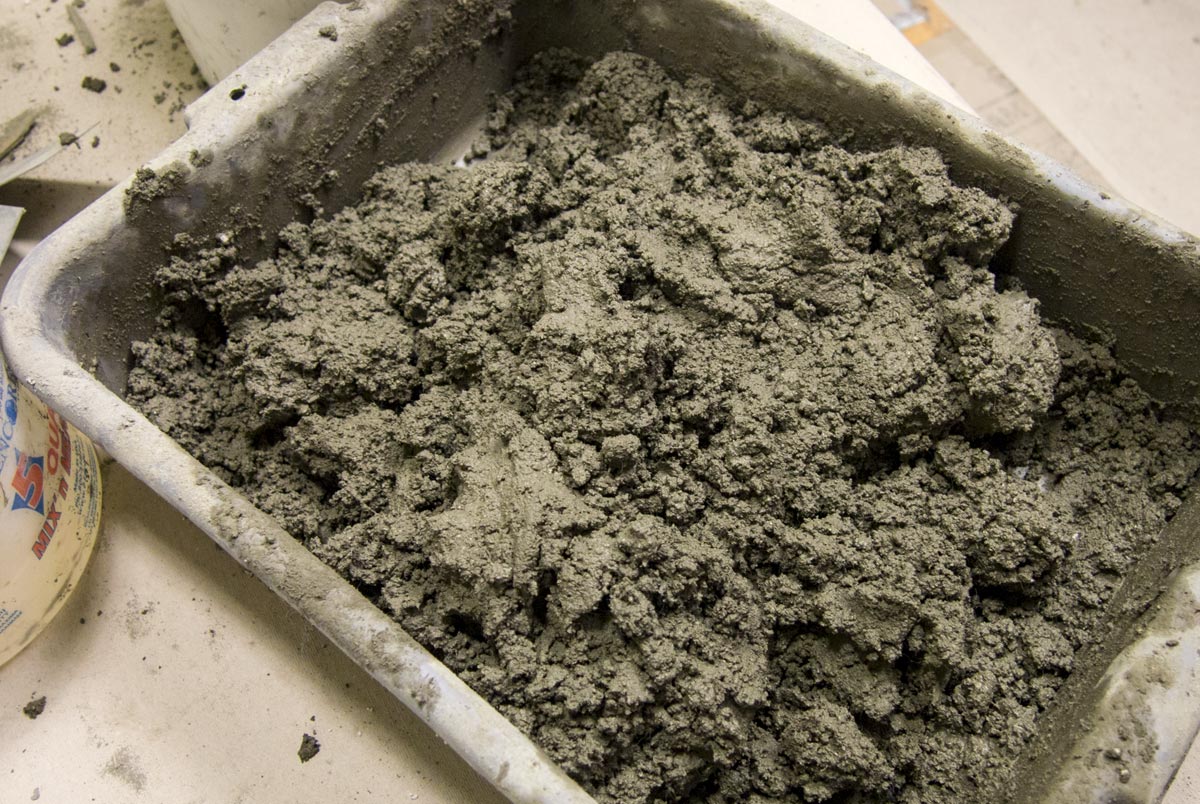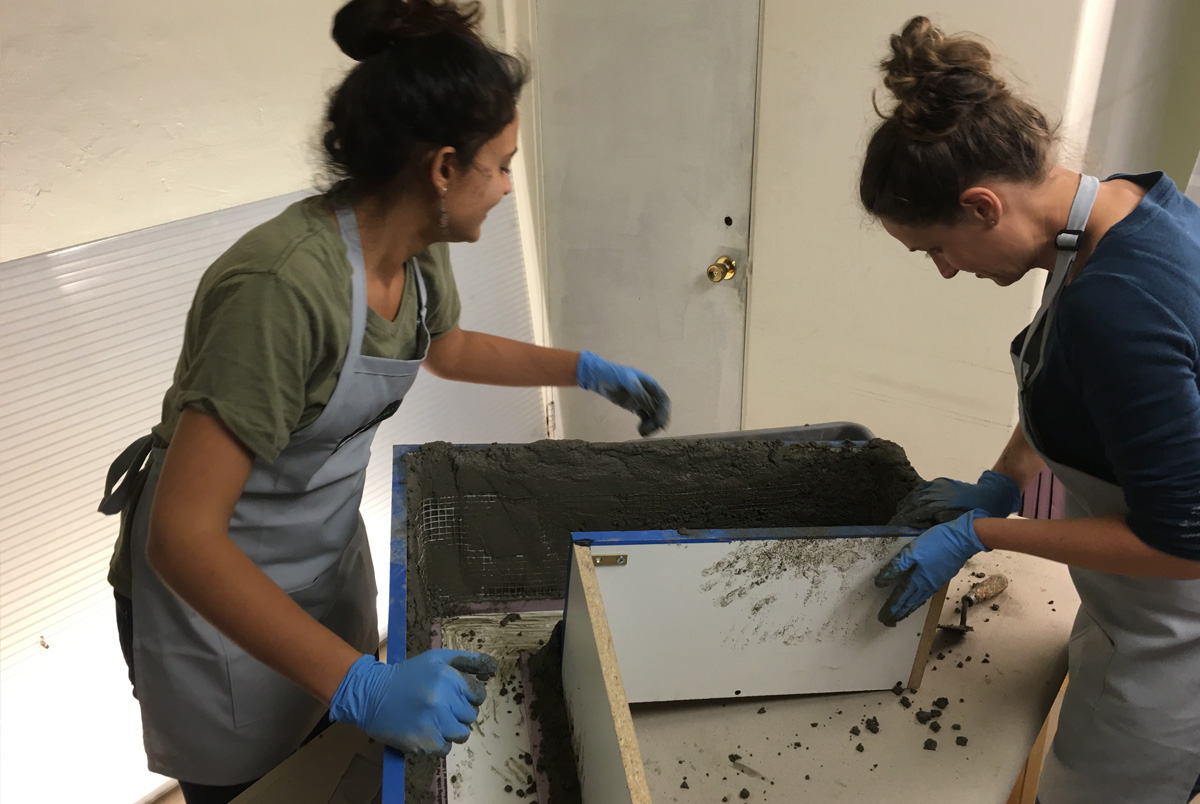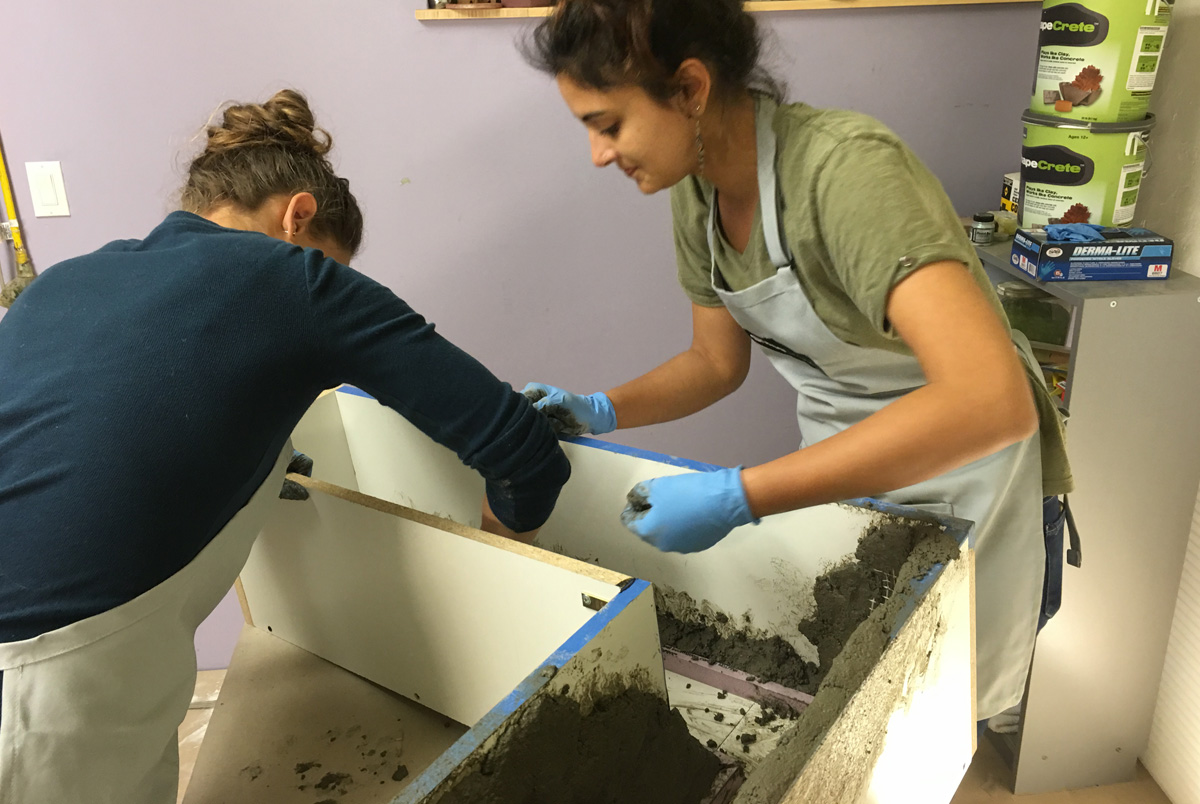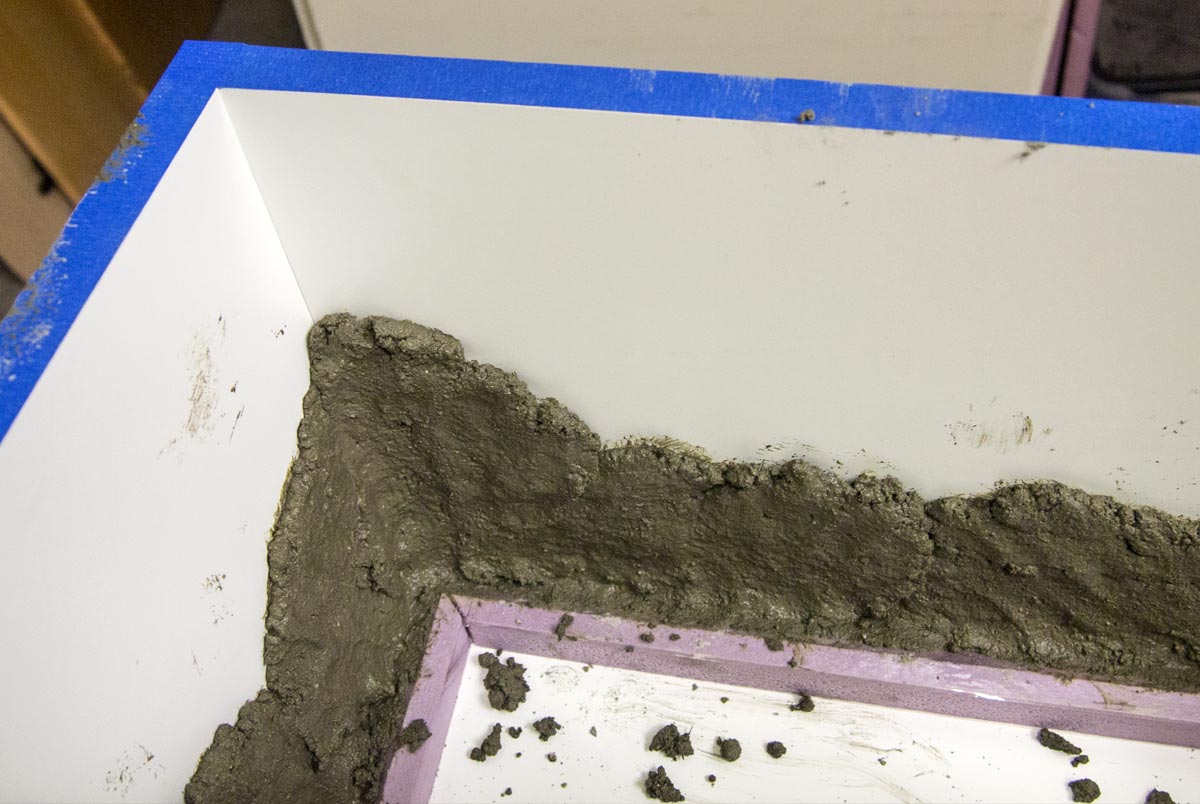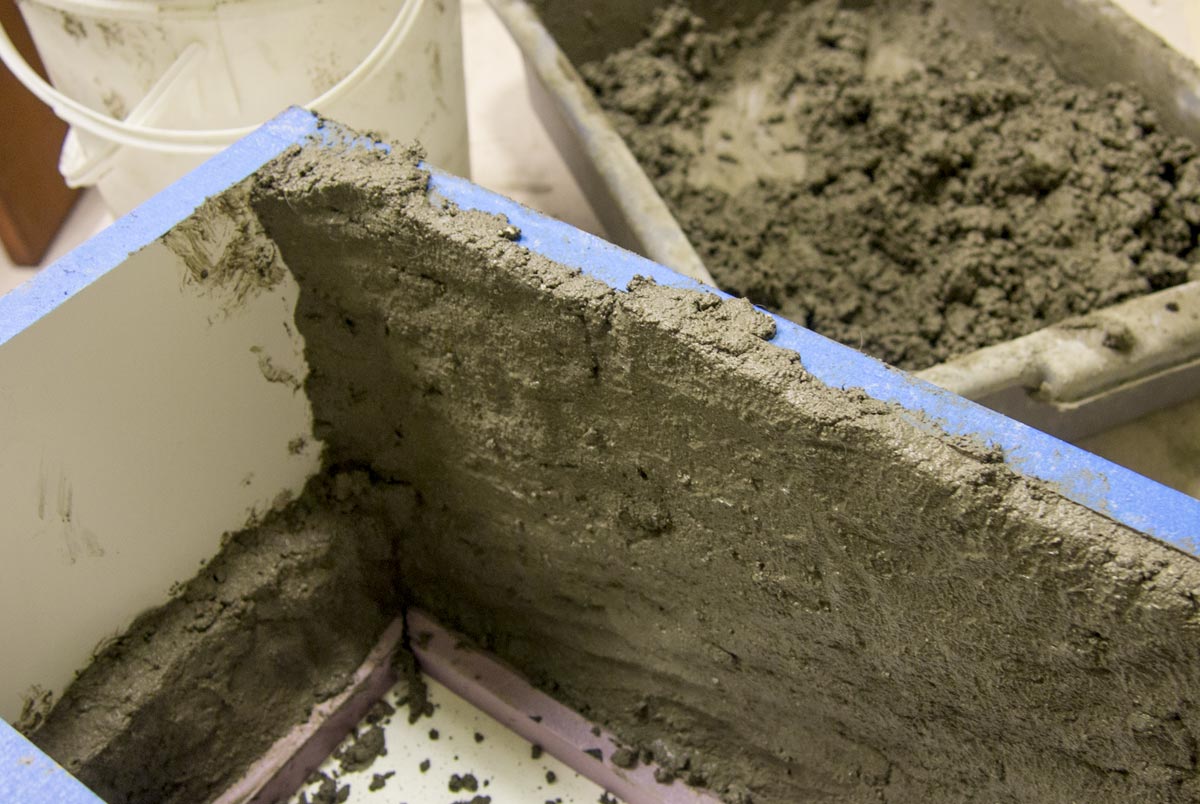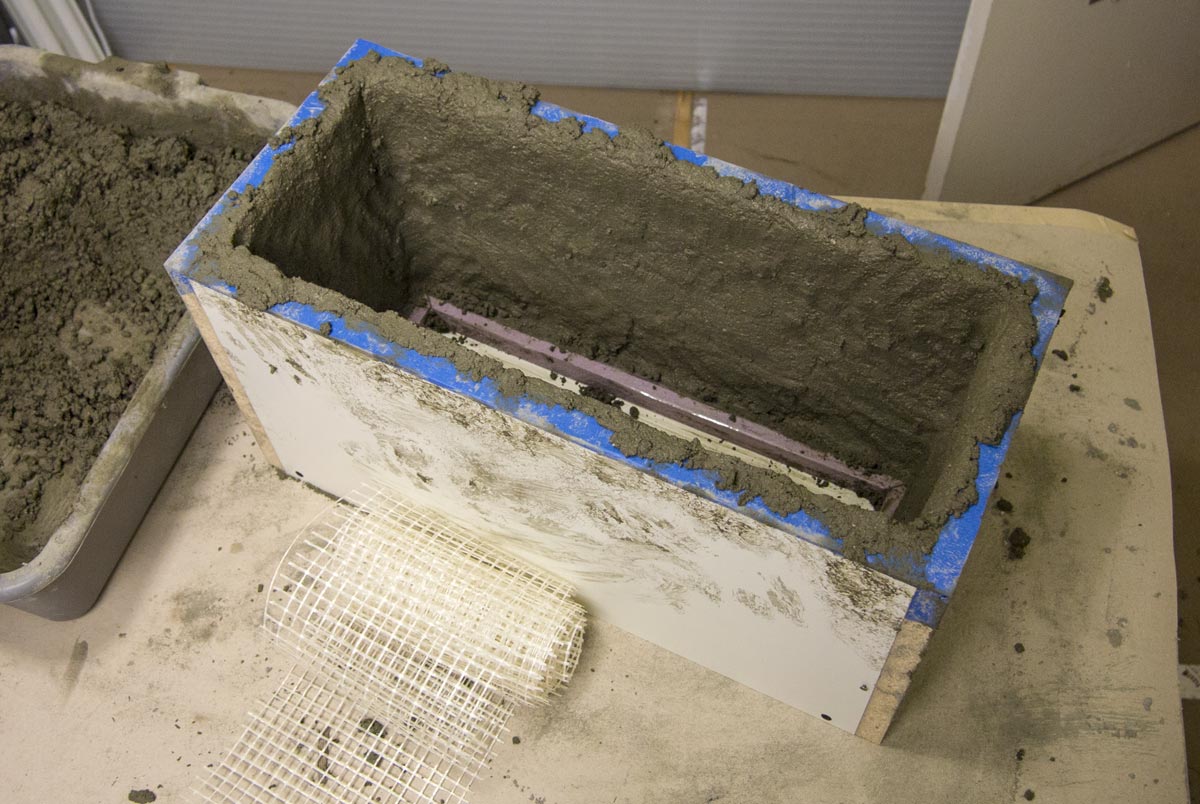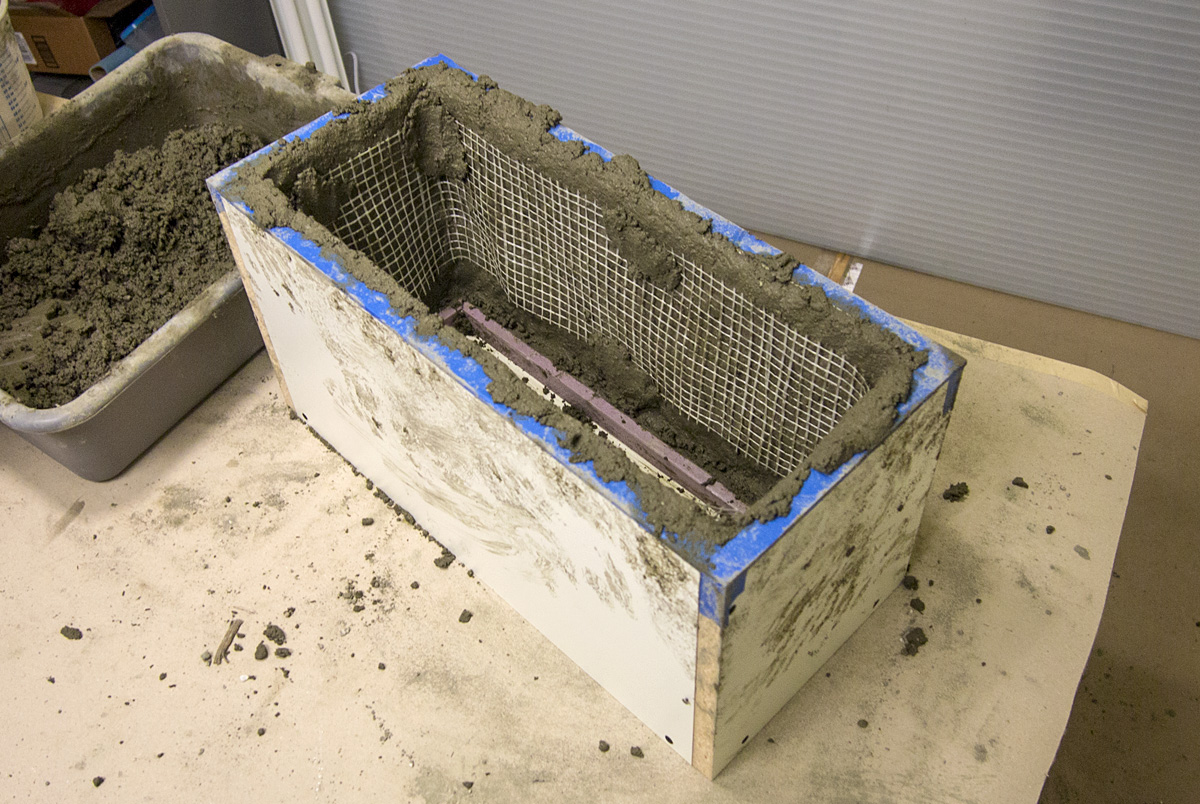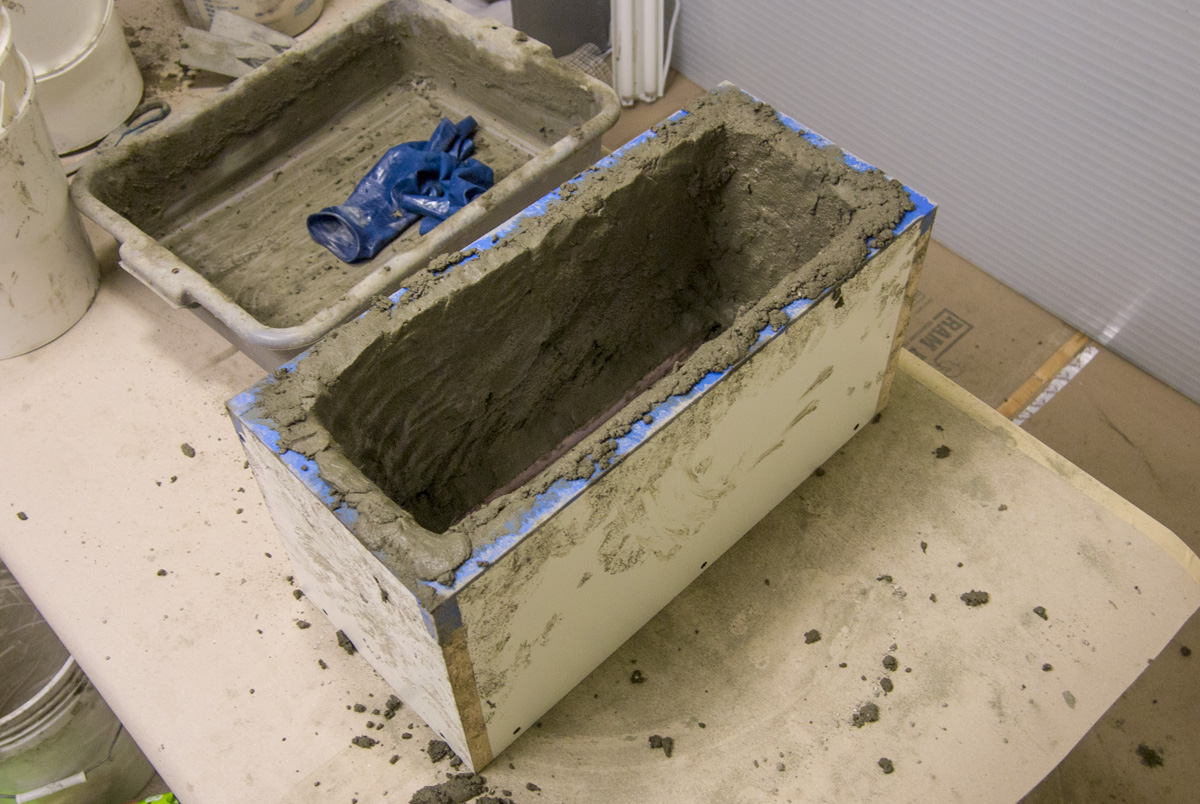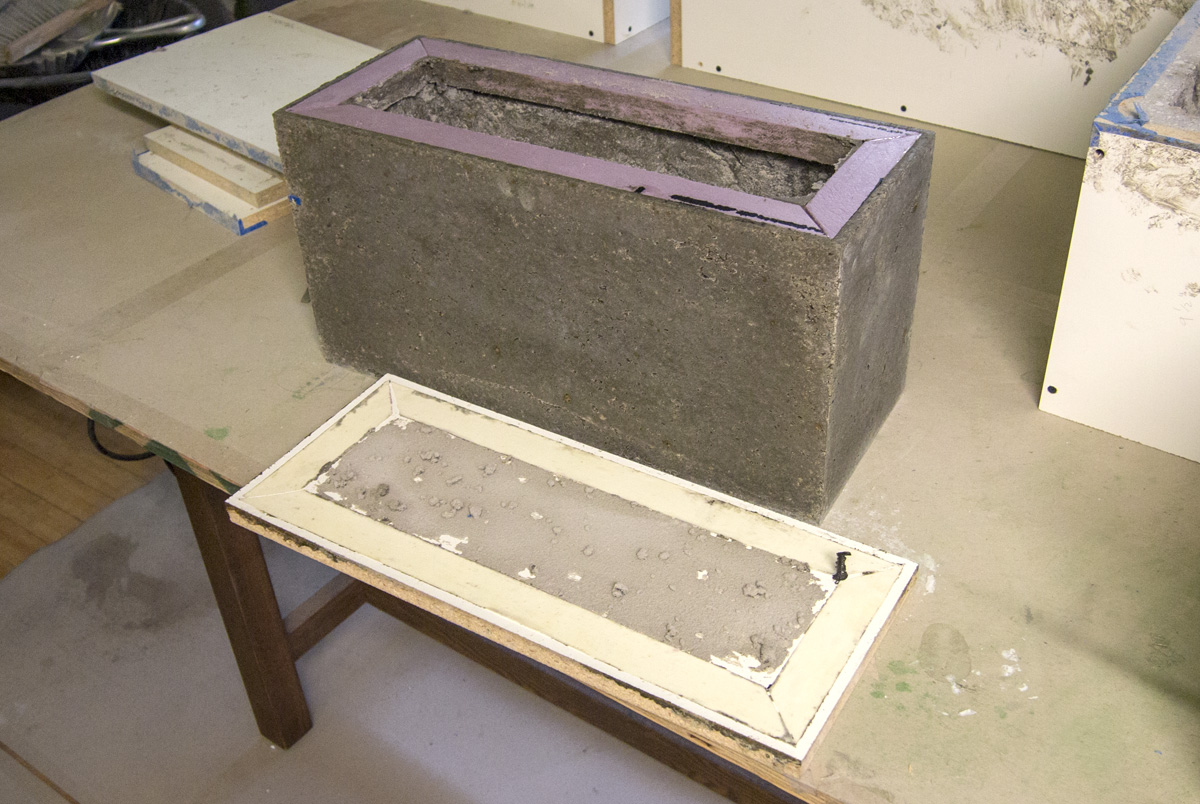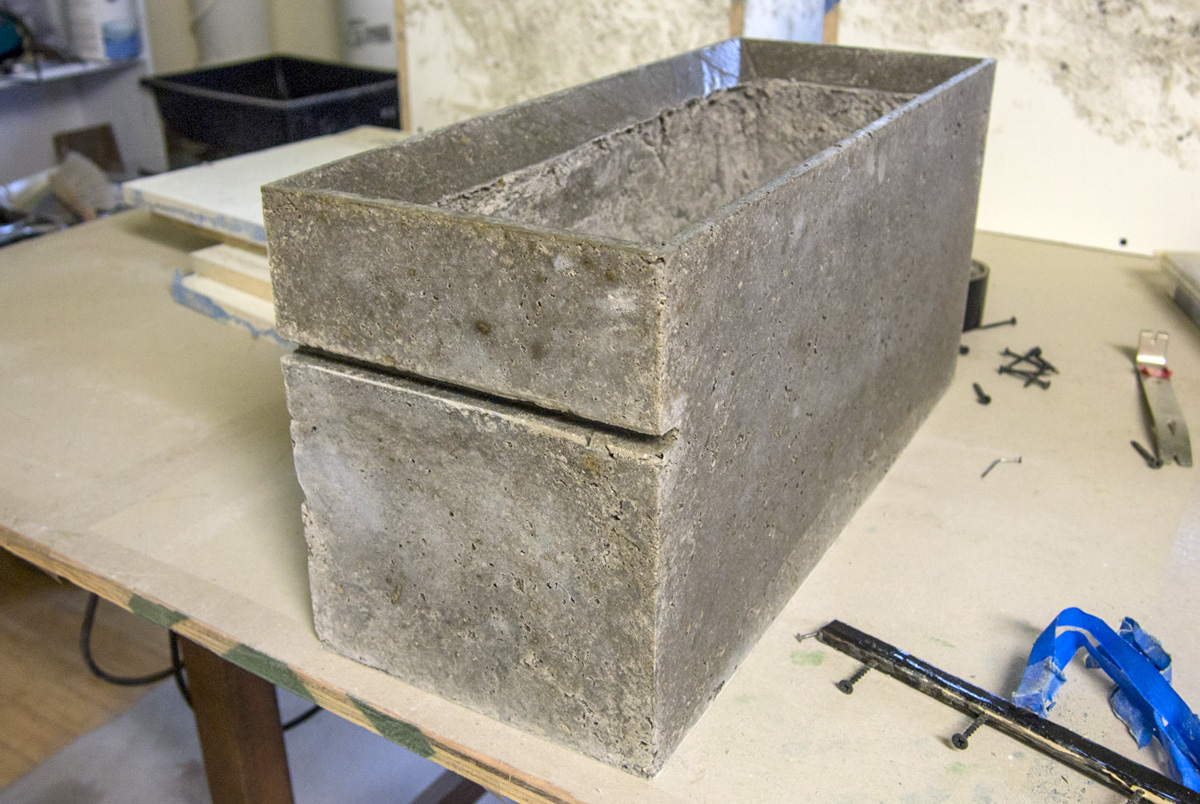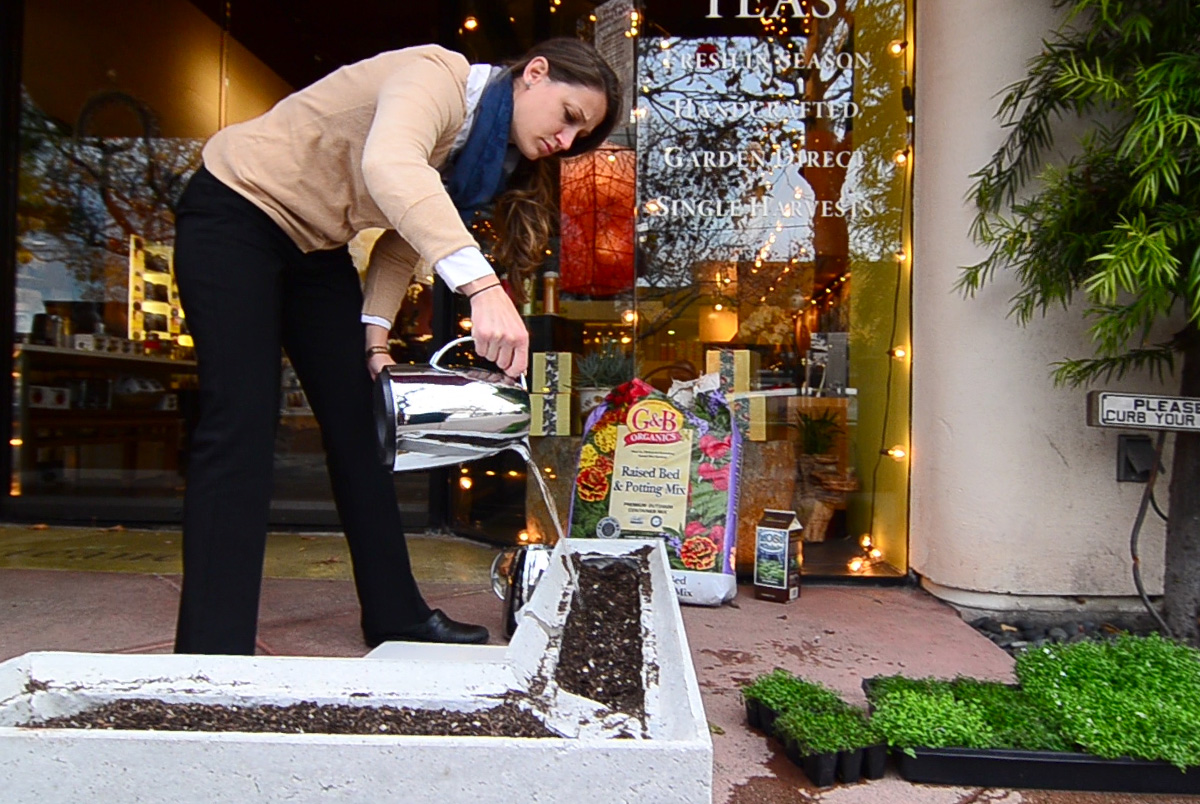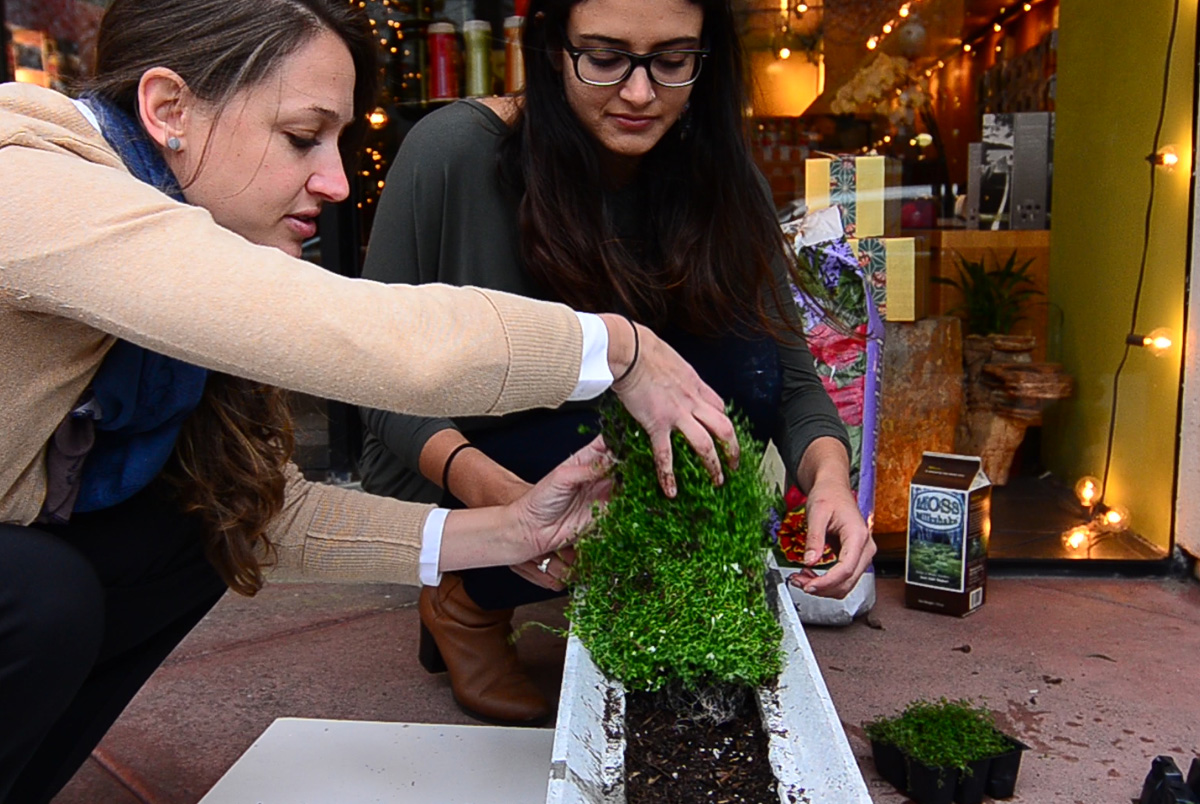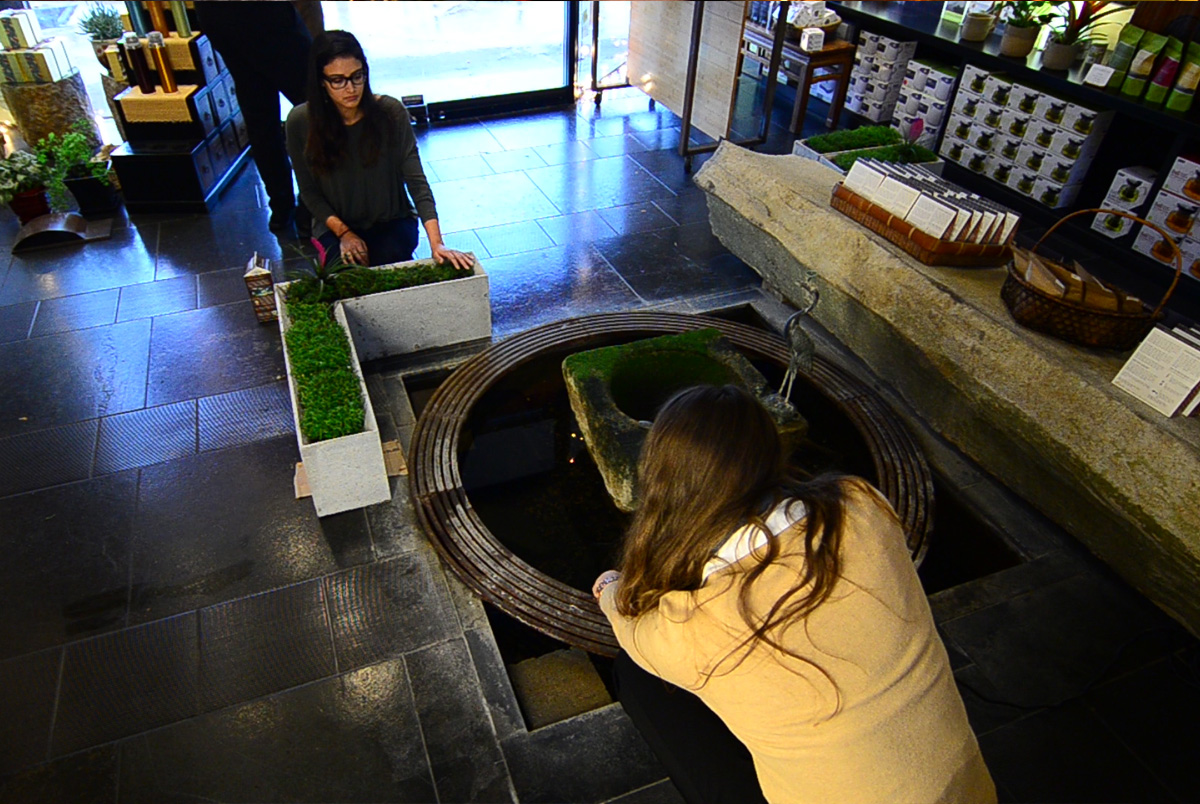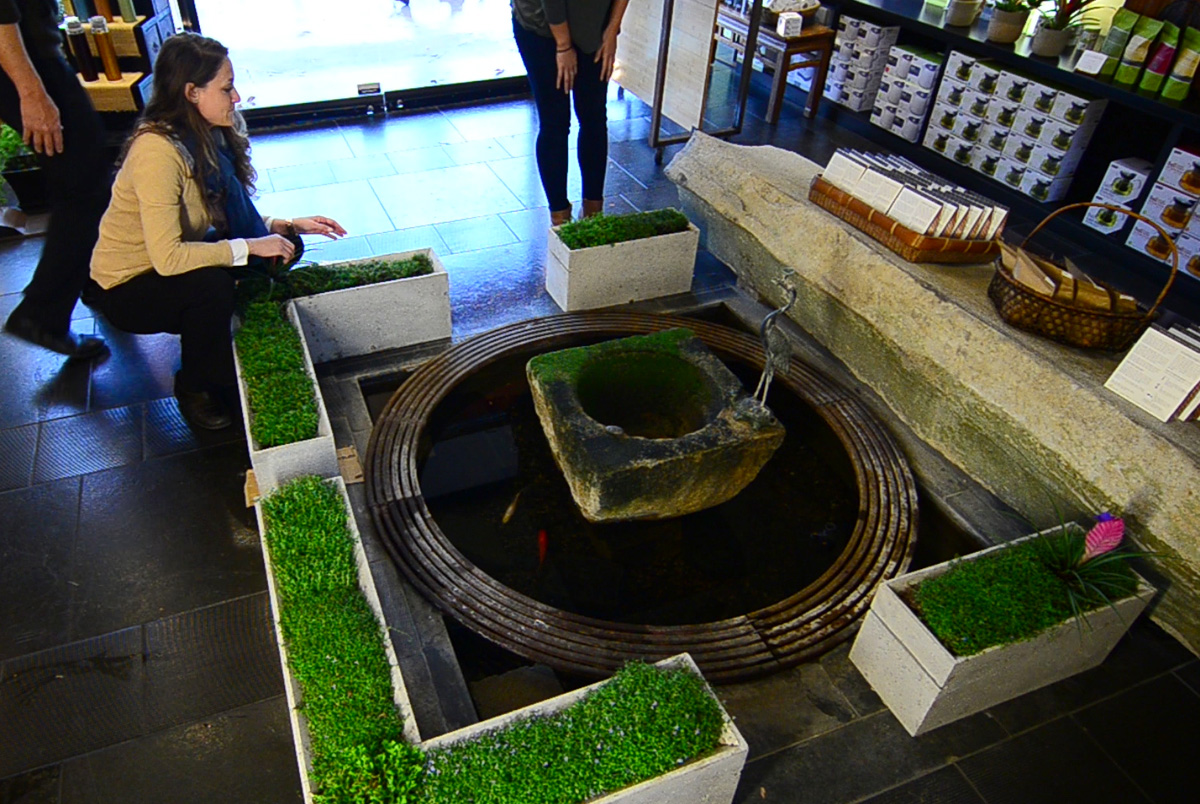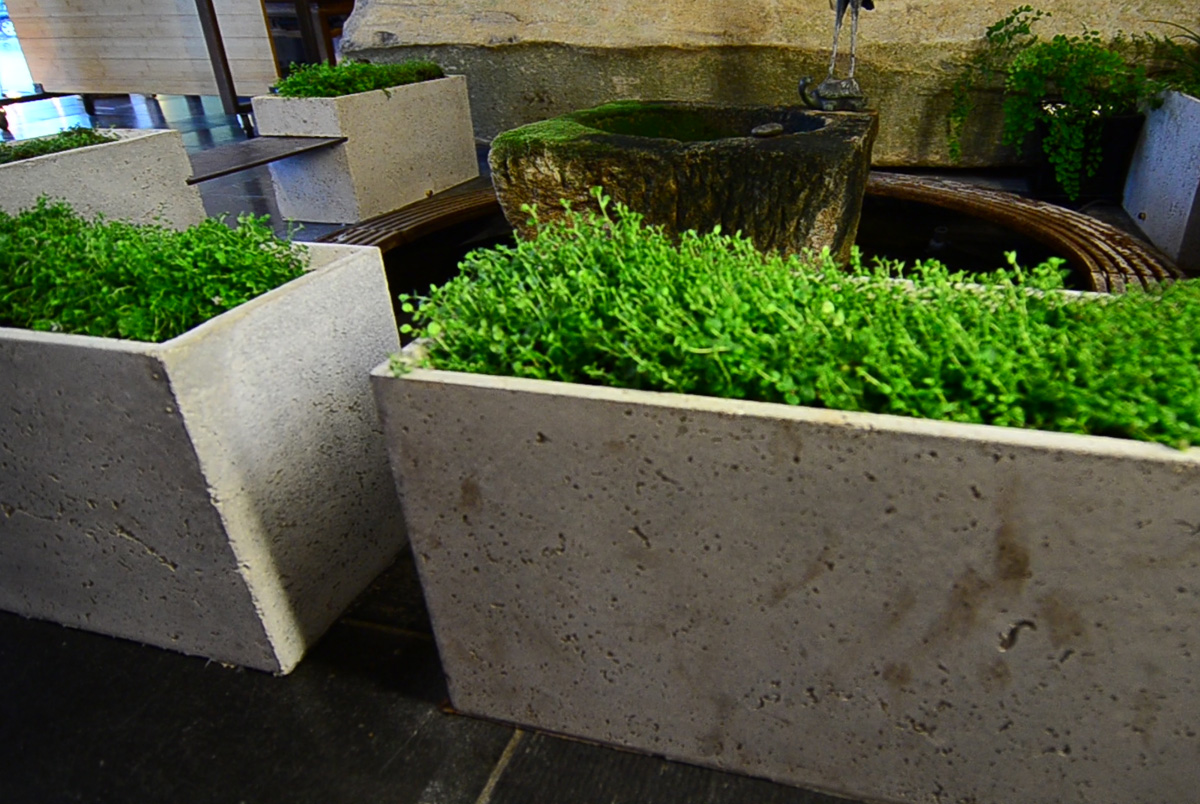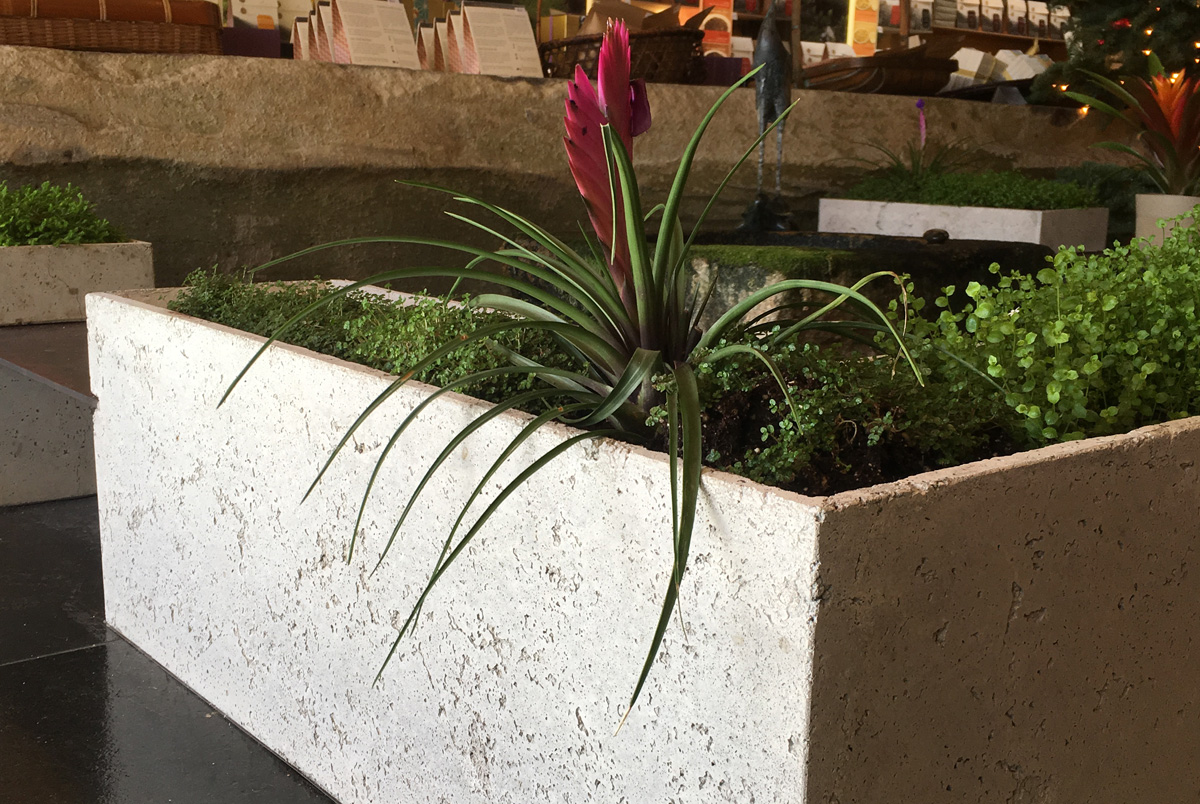Hypertufa Planters for Teance Tea Shop
Materials + Supplies:
• 3/4" Melamine Form
• 1" Pink Insulating Foam
• Clear Packing Tape
• Double Sided Carpet Tape
• Drywall Screws
• Rubber Gloves, Dust Mask
• Mixing Supplies
• 200 lbs. ShapeCrete
• Perlite
• Peat Moss
• Metal Sheeting / Silicone Caulk
Tools:
• Table Saw or Circular Saw
• Cordless Drill and Driver
• Mixing Containers
Size: 36" x 10" x 10"
Color: None
Technique: Hand Packed
Hypertufa Planters for Teance Tea Shop
Teance Fine Teas in Berkeley had a unique problem: kids loved jumping into the Koi pond in the entrance of the tea shop. Planters were placed around the pond as a temporary barricade, and then Fu-Tung Cheng, founder of ShapeCrete, got to work designing a pond surround for the tea shop.
The surround consists of four low planters, not too high to impose on the space, but just tall enough to keep small children from jumping in the pond and disturbing the fish.
To give the pieces a rough, organic look, we added perlite and peat moss to ShapeCrete, creating a hybrid ShapeCrete - Hypertufa mix that should grow moss over time and turn green like the rock beneath the fountain.
Elyse and Nyana work at the tea shop and came by the studio to help us assemble, pack, plant, and then install the planters. Watch the video on the next page and then check out the rest of the step-by-step instructions to see how easy it is to make these planters.
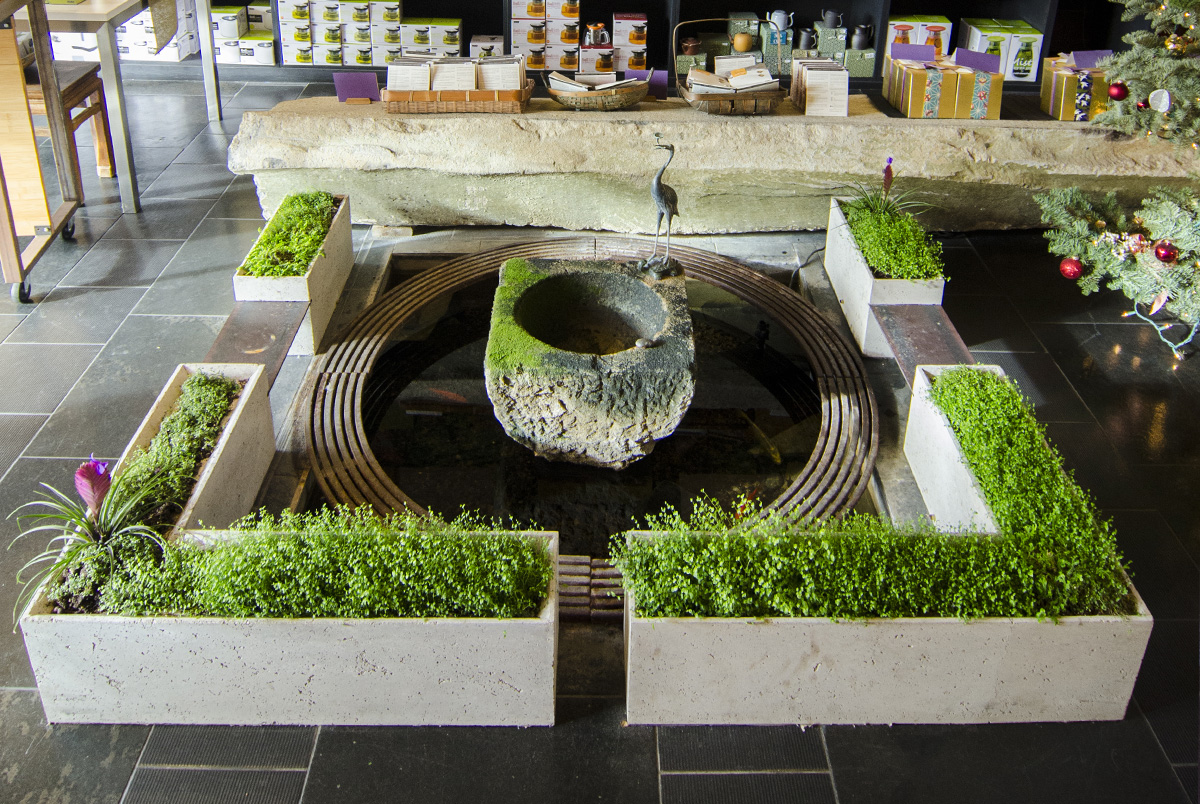
.jpg)
STEP 1:
Check out the video for an overview of the project.
Before building the forms, we modeled the planters in Sketchup to get the exact cut sizes of the form walls.
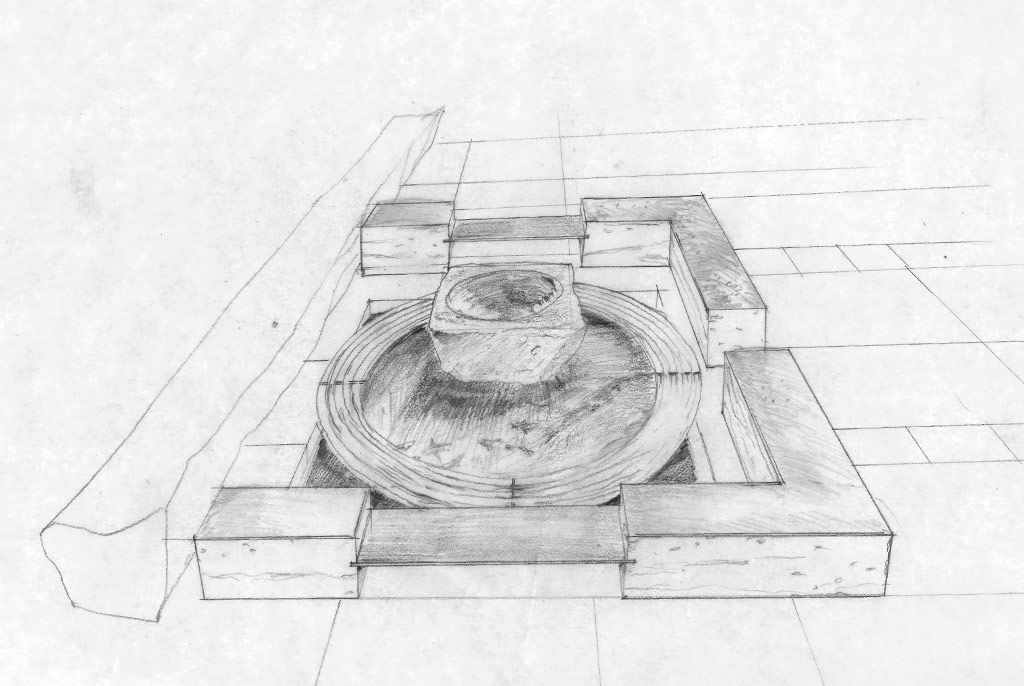
STEP 2: Building the Forms
The form walls are cut on a table saw out of 3/4" Melamine.
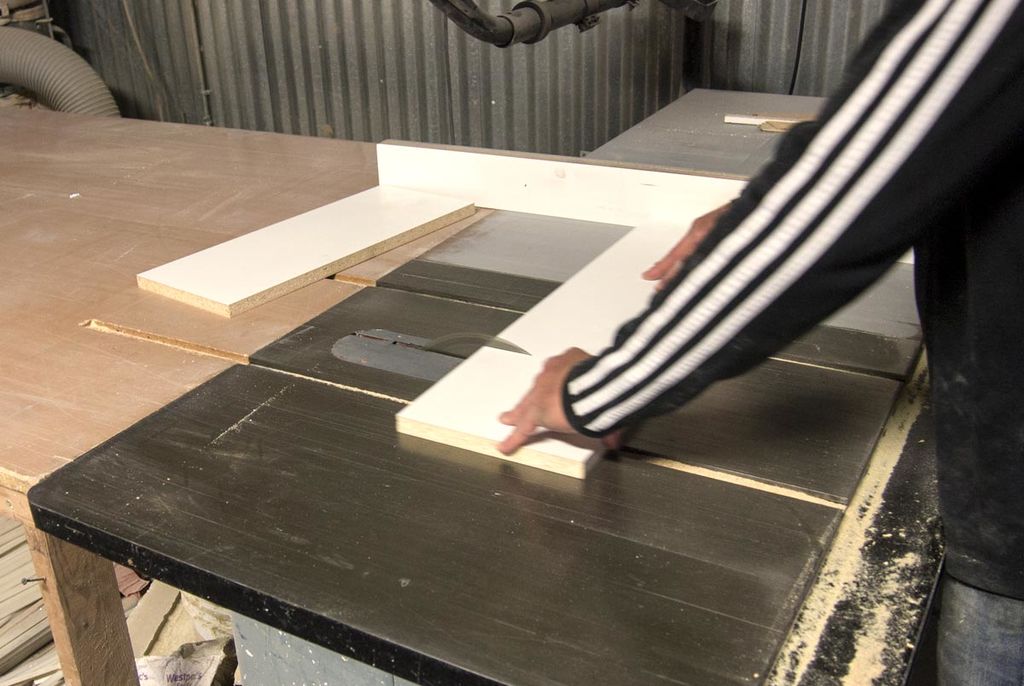
Strips of 1" thick pink foam are cut at an angle and then to length. They're covered in clear packing tape and then adhered to the form base with double-sided carpet tape. The packing tape will make them easy to remove from the finished piece. These strips will create the beveled edge on the top of the planter.
The forms are assembled with drywall screws that are pre-drilled and countersunk.
.jpg)
One final detail is added to the form which is a 1/4" square dowel wrapped in blue tape. This will create the lip for the metal plate to slot into place when the planters are finally put together.
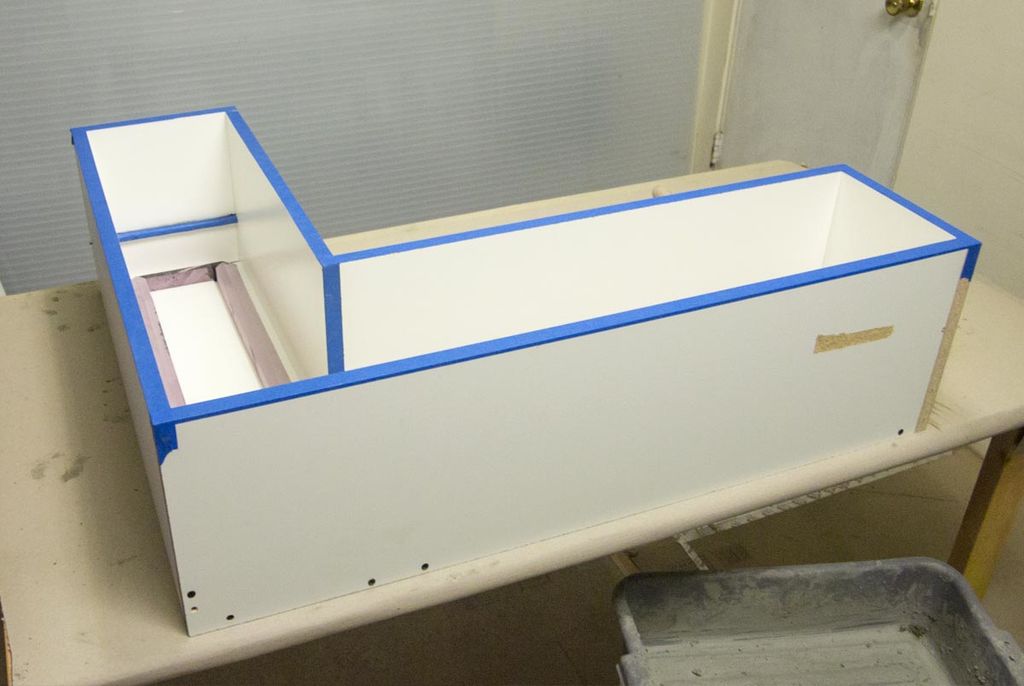
STEP 3: ShapeCrete Hypertufa Mix
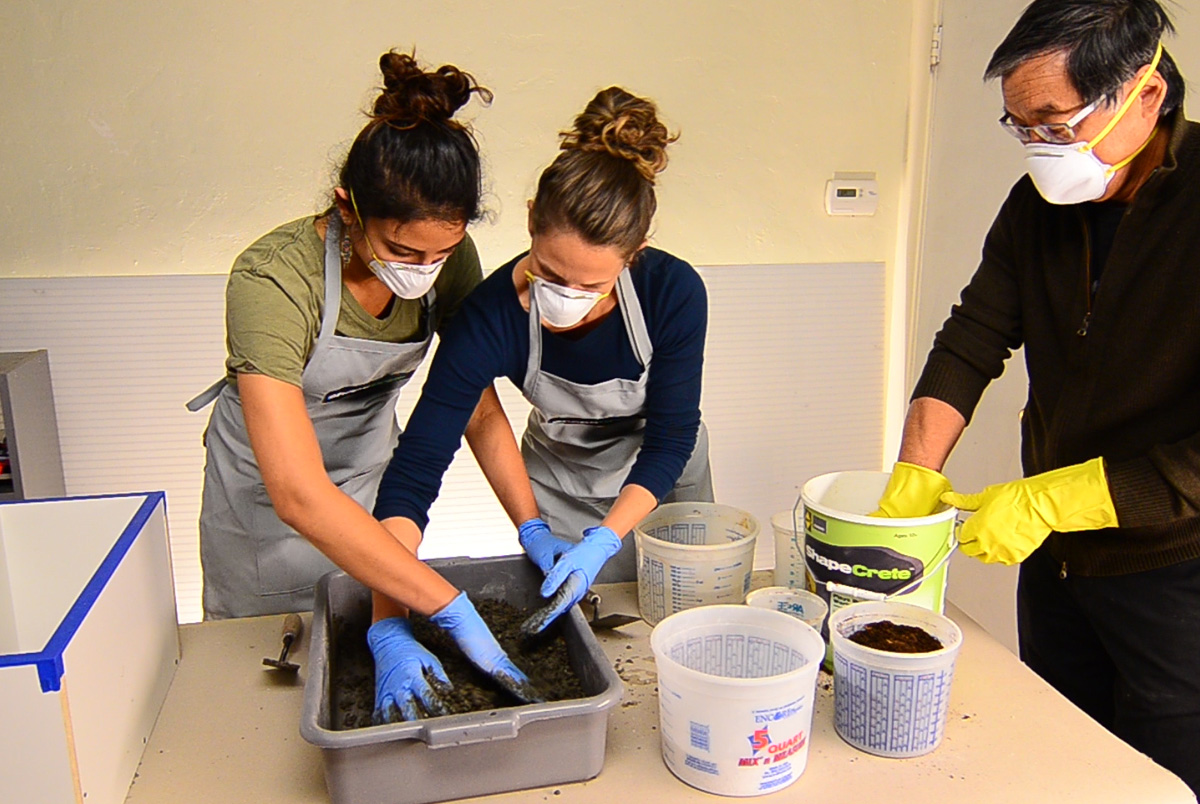
A regular Hypertufa mix is made from approximately:
- 2 parts cement : 3 parts peat moss : 3 parts perlite
Our ShapeCrete Hypertufa mix is:
- 4 parts ShapeCrete : 3 parts peat moss : 3 parts perlite
The downside of regular Hypertufa is that it's not very strong and requires a long time to cure. The ShapeCrete Hypertufa mix is easier to hand-pack and we can de-mold the pieces in 2-4 days because they're considerably stronger.
The addition of peat moss greatly weakens the mix. Any number of ratios will work, but what we determined for this project will give good pack-ability, a consistent surface finish, and just enough organic variation. Experiment with different proportions to arrive at a mix that works for your own project. We need these planters to be on the stronger side, so this is a good mix for the application.
After the raw ingredients are measured and mixed together, add water to achieve a Clay-Like Consistency.
STEP 4: Pack the Forms
Begin filling the forms, working the mix into the bottom of the form first, and then up the side of the walls.
If the mix is sliding down, try laying it up in thinner layers, or adding more dry material to stiffen it up.
When you get to the top of the form, wrap the mix over the edge to help it hang in place.
A layer of fiberglass mesh can be troweled into the back side for additional reinforcement.
For durability, maintain a thickness of about 3/4" - 1".
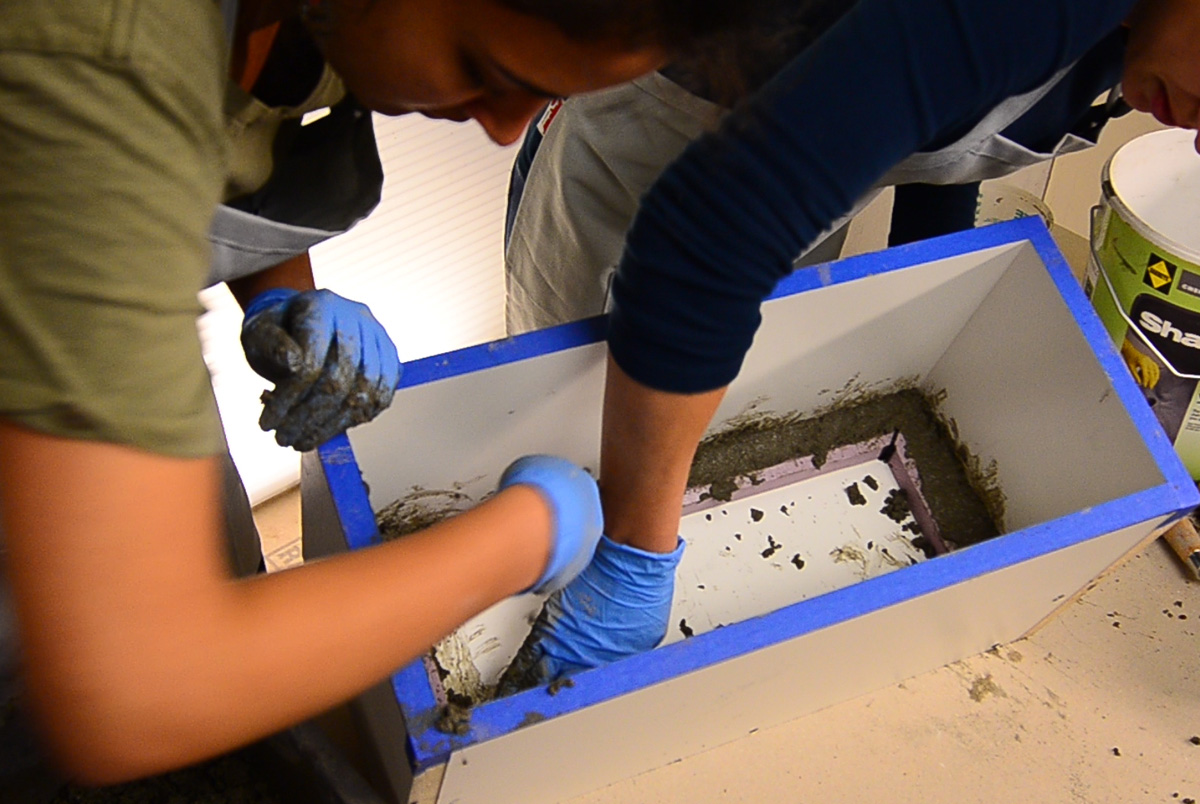
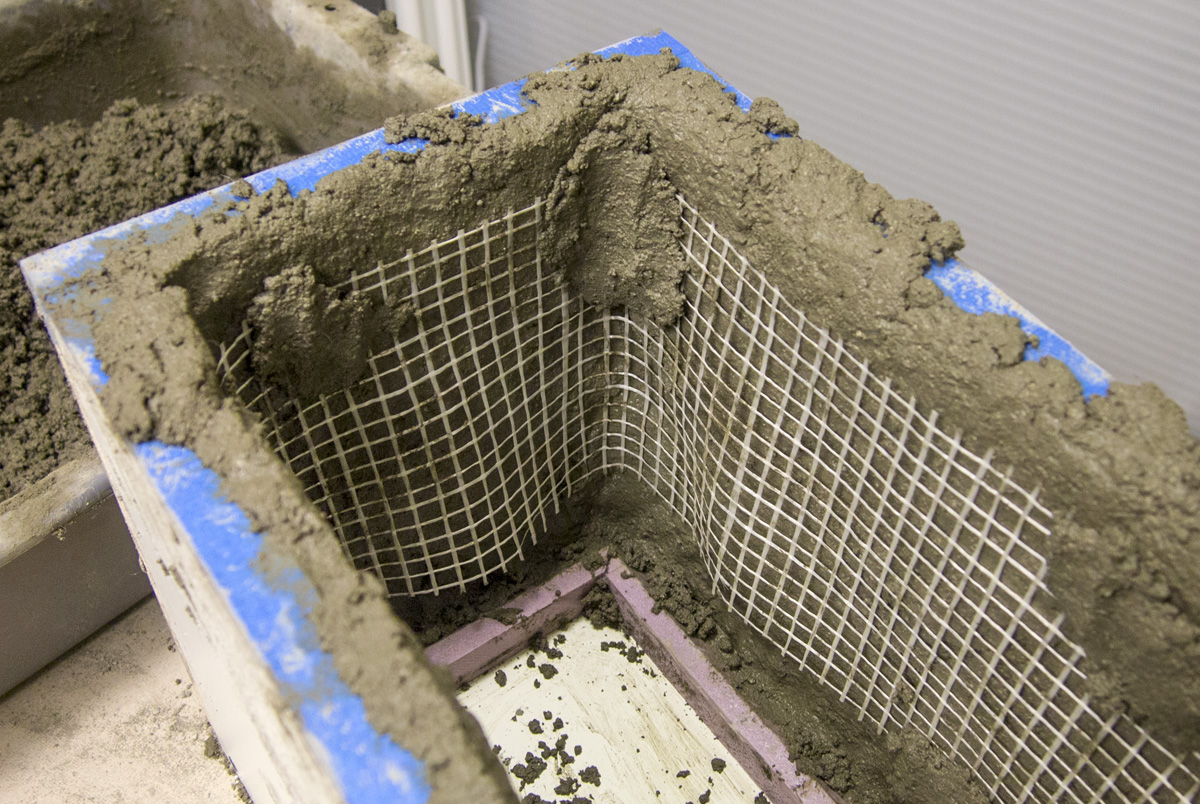
Cover with plastic and cure for 3-4 days.
STEP 5: Remove the Form
Remove the form walls and gently pry out the 1/4" dowel.
The pink foam is easily removed, and any sharp edges are rounded over with diamond hand pads or sandpaper.
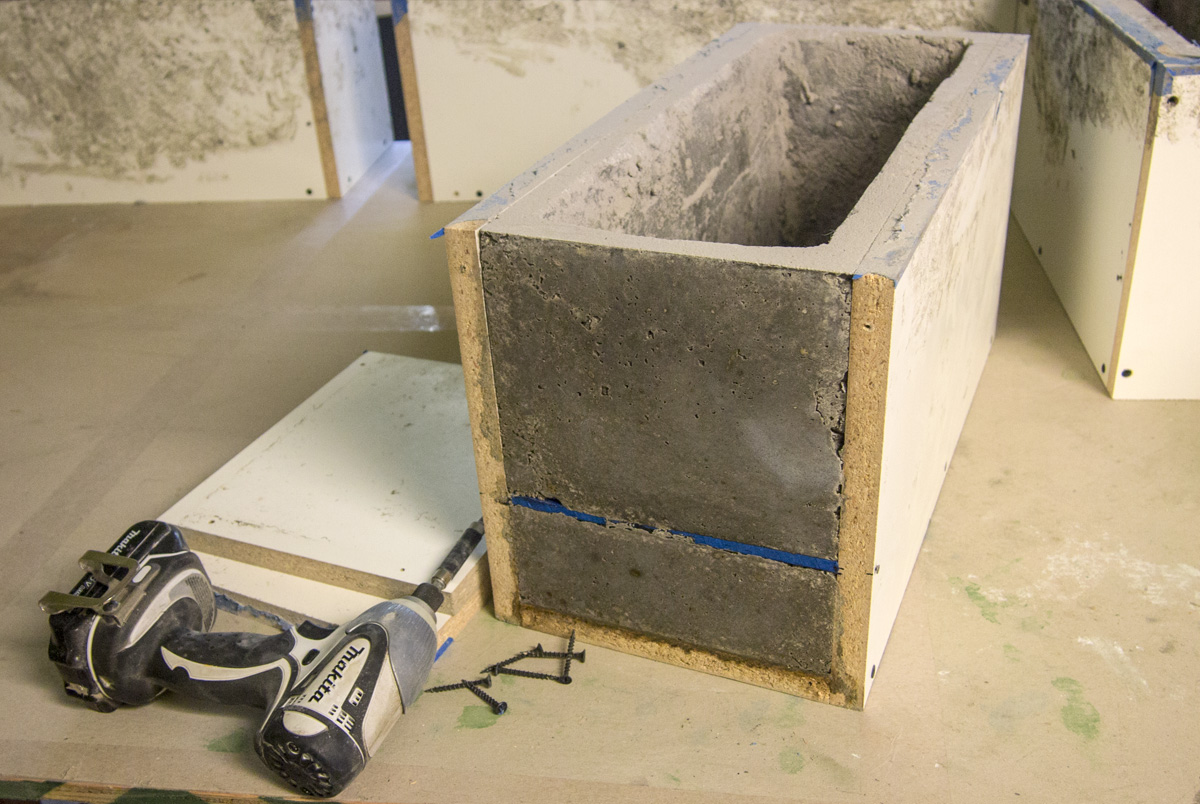
STEP 6: Fill with Soil
Strips of thin metal are stuck to the bottom of the planters with silicone caulk because they're going to be installed indoors.
Drainage holes are drilled low in the sides of the planters with a masonry bit. ShapeCrete is easy to drill because it doesn't contain large rock aggregate.
The planters are filled with soil, watered, and then a bed of green grass is planted, along with a few flowers.
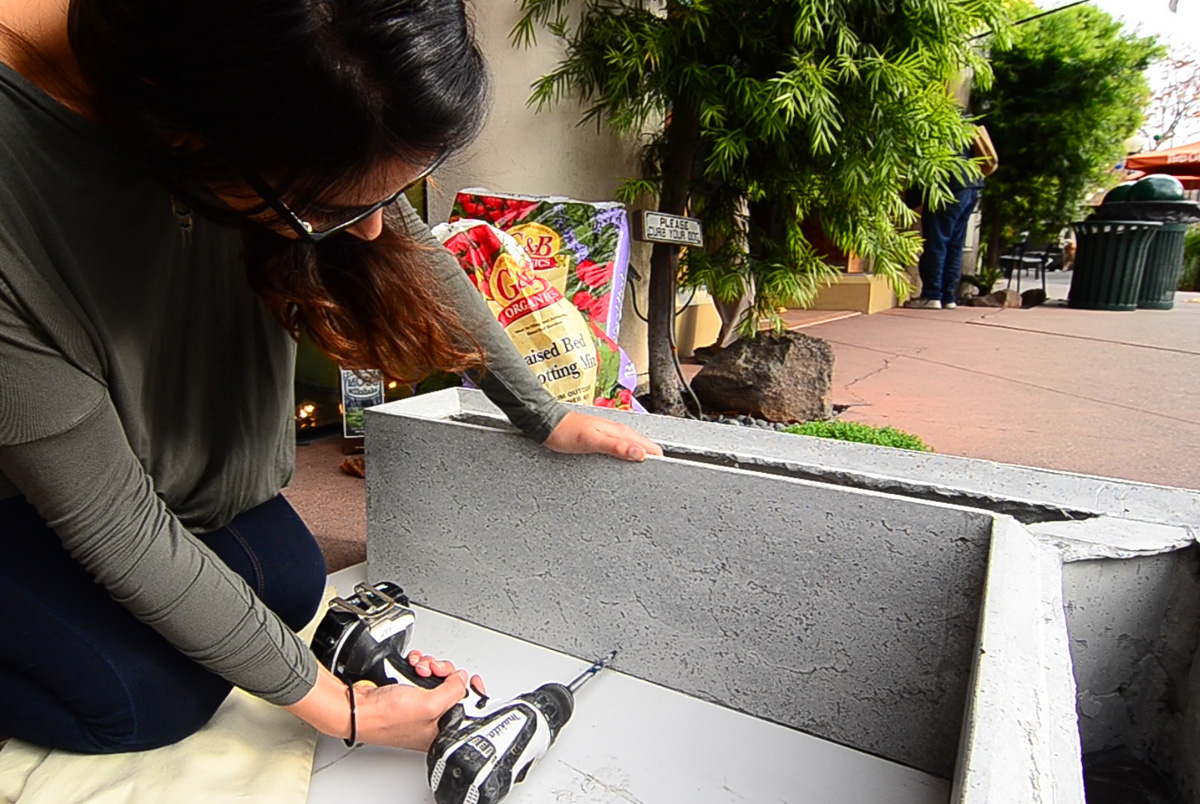
STEP 7: Installation
The pieces are carefully installed around the pond in the tea shop, taking care not to scratch the floor.
Two 1/4" thick metal plates bridge the gaps on the sides and fit into the grooves created by the 1/4" dowels.
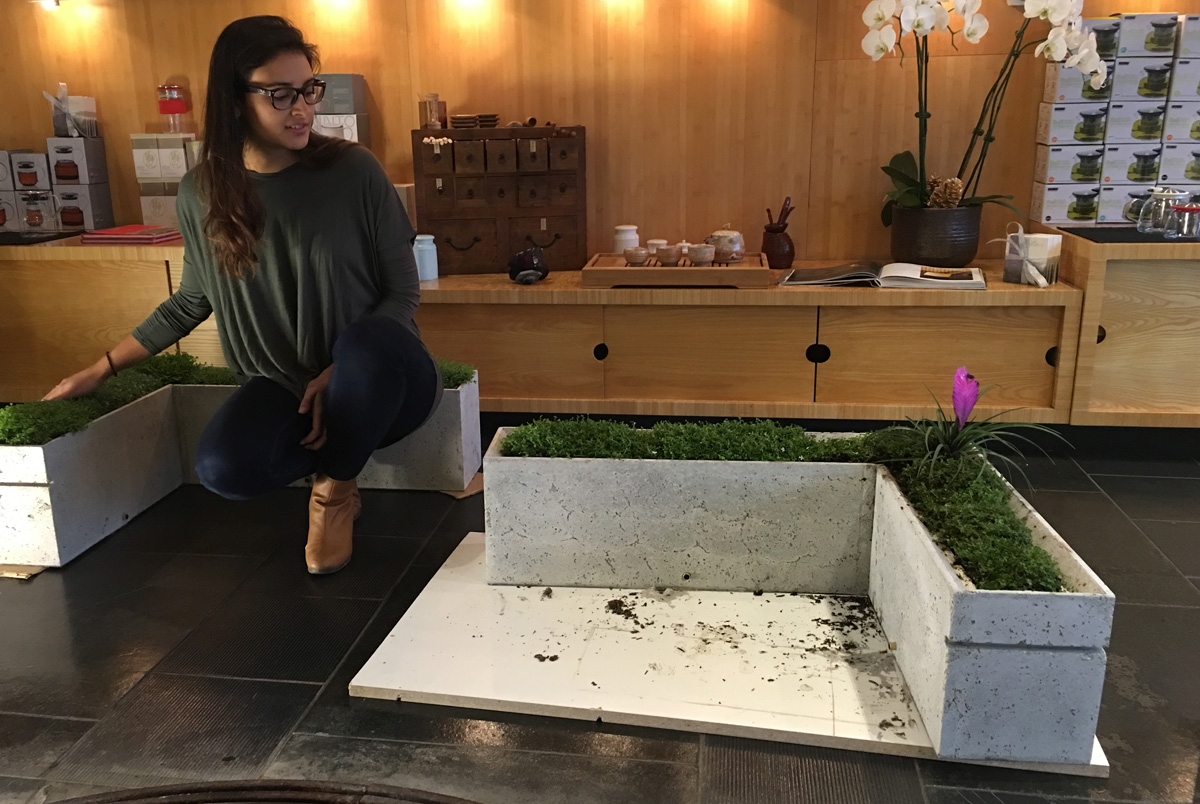
The Finished Planters:
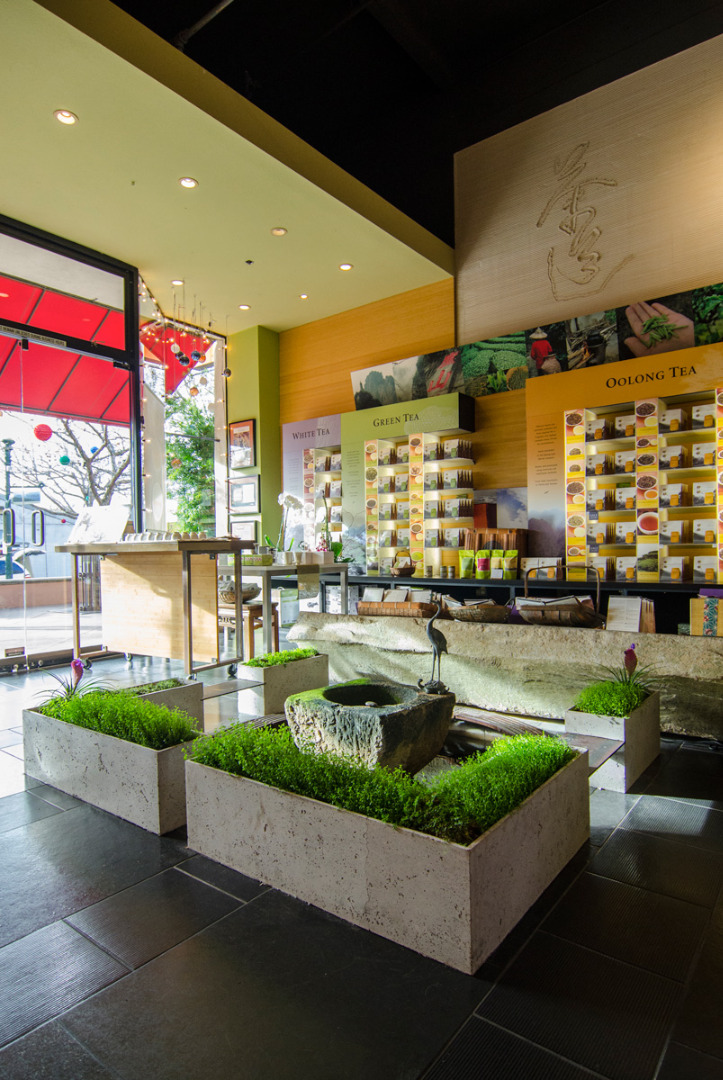
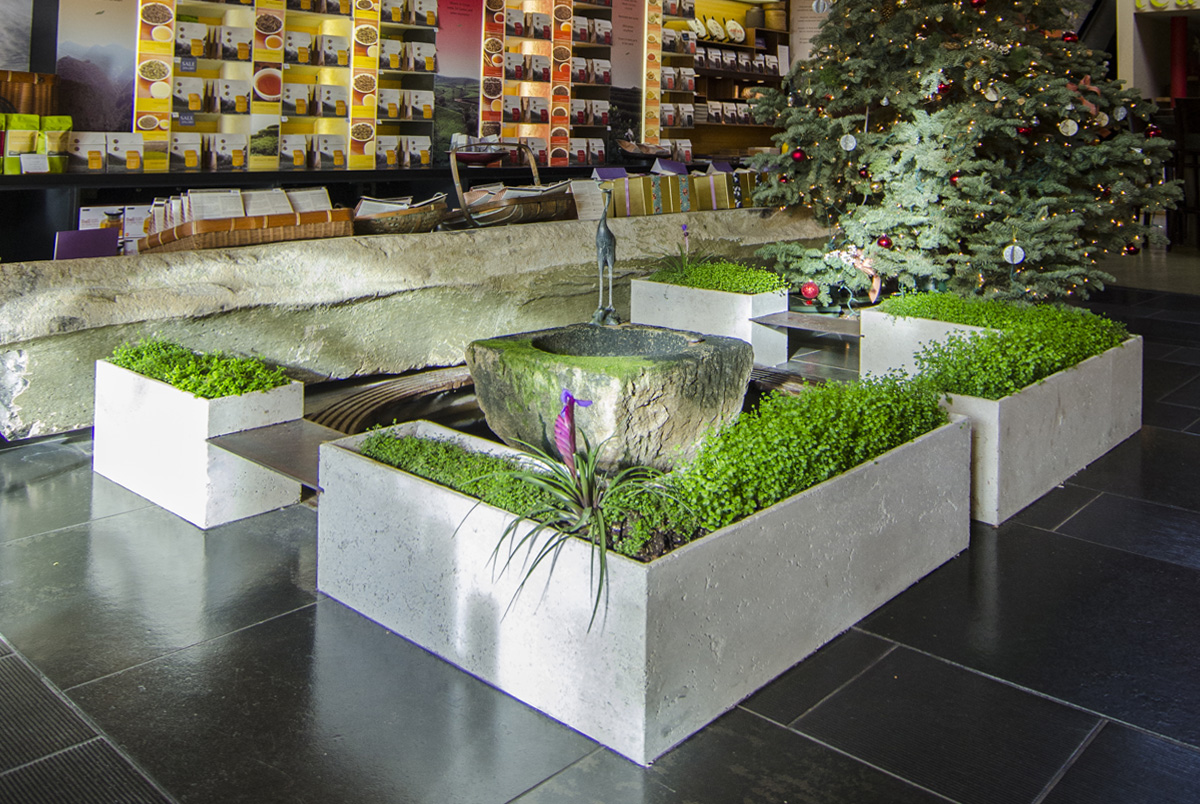
The finished planters look great around the pond and over time the organic material in the Hypertufa mix should help them grow moss and turn green.
A big thanks to Teance, Elyse, and Niana for their help with the project!



